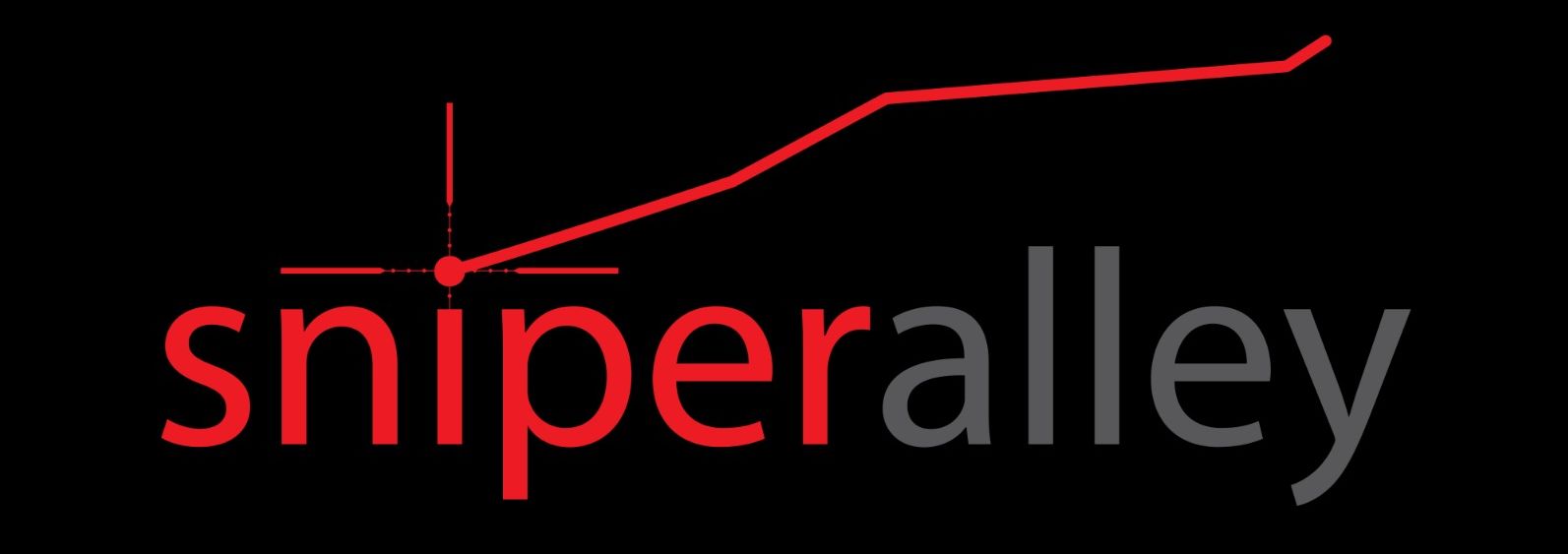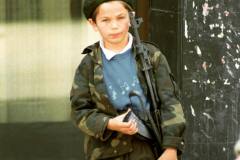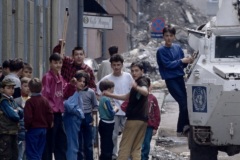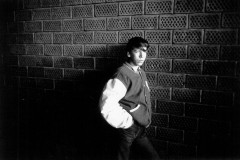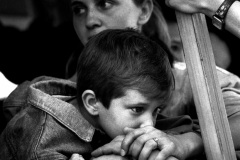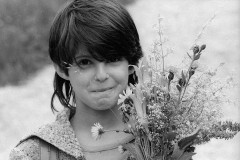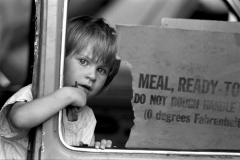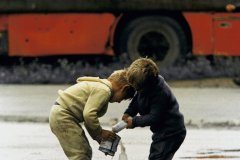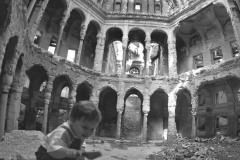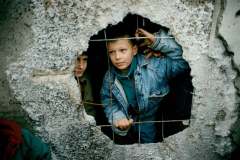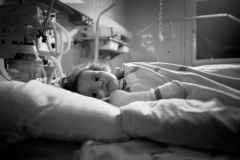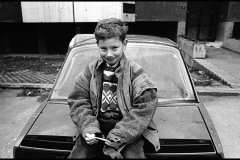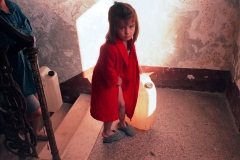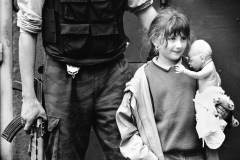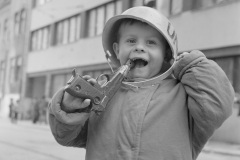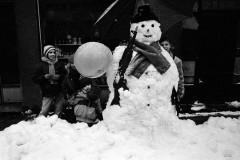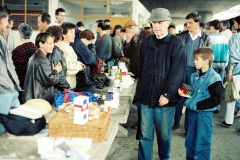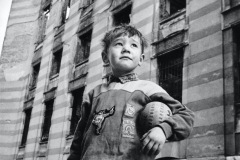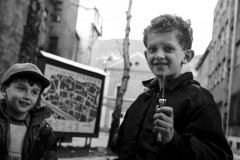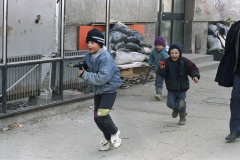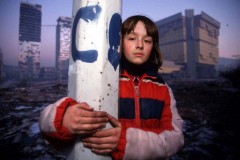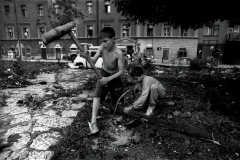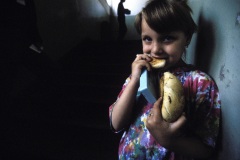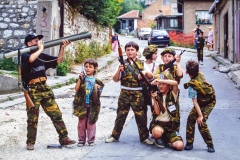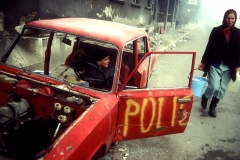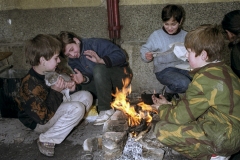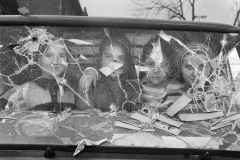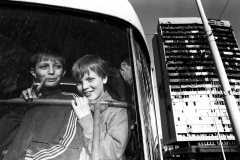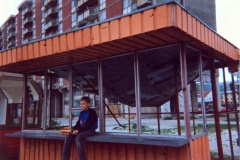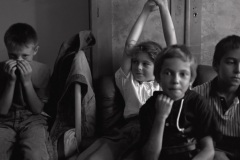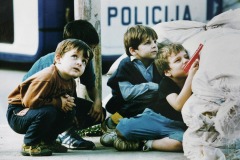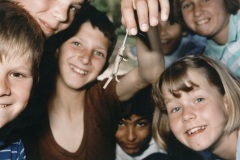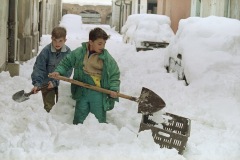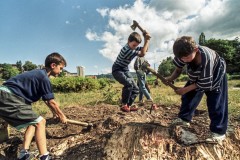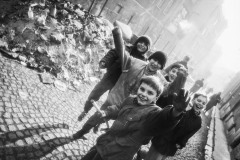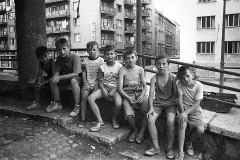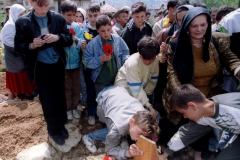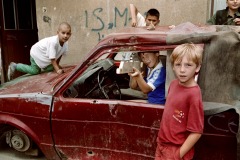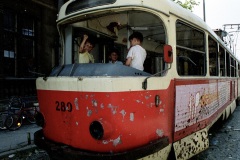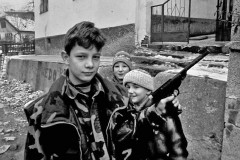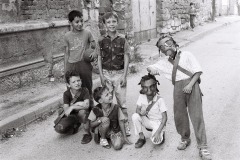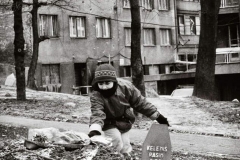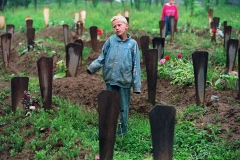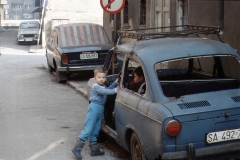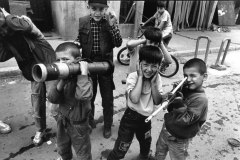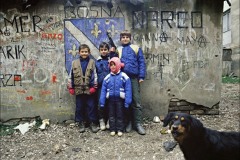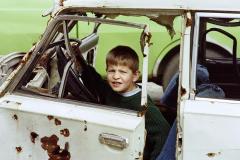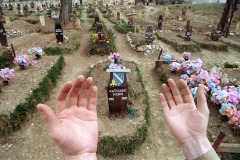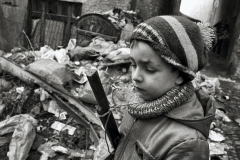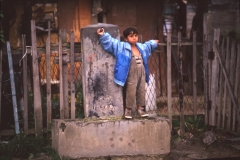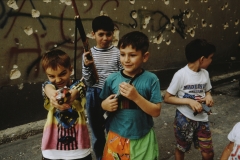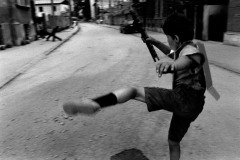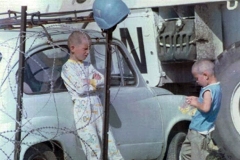
Jockel Finck (26 March 1962 - 28 January 2006) was a photojournalist for the Associated Press. His assignments included the fall of the Berlin Wall and the bloody disintegration of Yugoslavia. Finck started his career as a freelancer photographer in Hanover. In 1986 he joined Associated Press in Hamburg. In 1989 he changed to the Berlin office just as communism was crumbling in East Germany. He documented the historical occurrences of the fall of the Berlin Wall and the following reunification of East and West Germany.
Finck was in action in the important disaster and conflict zones in the world, like Sarajevo, the 1990–91 Gulf War, the 2003 invasion of Iraq and the 2004 earthquake in Iran.
He died while vacationing with his family in the Bavarian town of Traunstein when he suffered a heart attack.
Finck was in action in the important disaster and conflict zones in the world, like Sarajevo, the 1990–91 Gulf War, the 2003 invasion of Iraq and the 2004 earthquake in Iran.
He died while vacationing with his family in the Bavarian town of Traunstein when he suffered a heart attack.
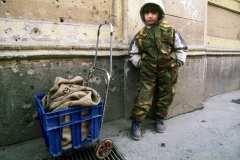
Raffaele would surely like this site to continue to thrive as it did when he was alive and passionately nurtured it. So we're keeping it online as it was left by him before his last departure for Ramallah.
We just added his last footage and one more area, with his last photos and comments from his workmates and friends. Please visit > http://www.raffaeleciriello.com
We just added his last footage and one more area, with his last photos and comments from his workmates and friends. Please visit > http://www.raffaeleciriello.com
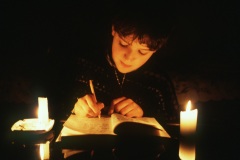
Alexandra Boulat was born in Paris, France, May 2, 1962. She was originally studying graphic design and art history at the Beaux Arts in Paris. She followed in the steps of her father, photographer Pierre Boulat, who worked for LIFE magazine for 25 years and her mother Annie Boulat, founder of Cosmos photo agency which she founded in 1979. Alexandra grew up surrounded with photography and in 1989 she joined Sipa agency and headed for the Balkans where she established herself as one of the very few women conflict photojournalists. Boulat was represented by her mother’s agency Cosmos and then by Sipa Press for 10 years until 2000. Her news and feature stories were published in many international magazines, above all National Geographic Magazine, TIME, and Paris-Match. She has received many of the most prestigious international photography awards for her work. She won awards from; The Harry Chapin Media Awards 1994 - Besieged Sarajevo – A reportage on daily life in Sarajevo during the Bosnian war, published in the book 'Material world'. Paris-Match Award 1998 – Violence in Kosovo. Perpignan, Visa d’Or pour l’Image, 1998 – Daly life and violence in Kosovo. USA Photo Magazine’s photographer of the year, 1998. Infinity Award, International Center of Photography, New York, 1999 – daily life and violence in Kosovo. The Overseas Press Club in 2003 for her coverage of Afghanistan, and was named Best Woman Photographer by the Bevento Oscars in Italy in 2006. Boulat covered news, conflicts, and social issues as well as making extensive reportages on countries and people. Among her many varied assignments, she reported on the wars in former Yugoslavia from 1991 until 1999, including Croatia, Bosnia & Herzegovina and Kosovo; the fall of the Taliban, the Iraqi people living under the embargo in the 90s, and the invasion of Baghdad by the coalition in 2003. Her work is on display at www.viiphoto.com and partly on www.pierrealexandraboulat.com
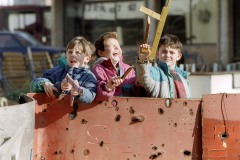
Anja Niedringhaus (12 October 1965 – 4 April 2014) was a German photojournalist who worked for the European Pressphoto Agency and the Associated Press. She was the only woman on a team of 11 AP photographers that won the 2005 Pulitzer Prize for Breaking News Photography for coverage of the Iraq War. That same year she was awarded the International Women's Media Foundation's Courage in Journalism Award. She worked as a reporter in other conflict zones, including Croatia, Bosnia, Kosovo, Israel, Palestine, and Pakistan. She also covered nine Olympic Games and other sporting events. She was shot and killed on 4 April 2014 in Khost, Afghanistan, while reporting on an election-commission convoy preparing for the presidential election in Afghanistan.
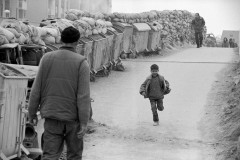
Born a photographer, Abbas was an Iranian transplanted to Paris. He dedicated himself to documenting the political and social life of societies in conflict. In a career that spanned six decades, he covered wars and revolutions in Biafra, Bangladesh, Northern Ireland, Vietnam, Balkans, the Middle East, Chile, Cuba, and South Africa during apartheid. He also documented life in Mexico over several years, and pursued a lifelong interest in religion and its intersection with society. https://abbasphotos.org
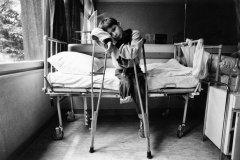
A Welsh photographer who dedicated his life to bring us stories from around the world, has had his life’s work published in a book following an incurable cancer diagnosis.
John Downing, who was born in Llanelli, has dedicated more than fifty years of his life to documenting some of the most significant events of recent years.
From terror attacks to civil wars to royal marriages, his work is recognised the world over. www.johndowning.co.uk
John Downing, who was born in Llanelli, has dedicated more than fifty years of his life to documenting some of the most significant events of recent years.
From terror attacks to civil wars to royal marriages, his work is recognised the world over. www.johndowning.co.uk
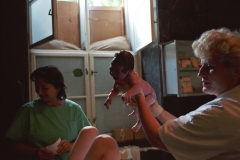
Pulitzer Prize-winning photographer Karsten Thielker, born 1965, entered photo journalism as an autodidact 30 years ago.
As a war reporter he worked for the news agency Associated Press in the early 90s, covering conflict and war zones, like Bosnia, Somalia, Rwanda or Chechnya. His Rwanda photographs earned him the Pulitzer Prize in 1995.
Besides his reporter work, Thielker trained photojournalists in Eastern Europe, Africa, Central America and Asia: teaching in Goethe Institutes in Nigeria and Mexico, else in Prague, Czech Republic, and classes at the Ateneo University in Manila, Phillipines.
Returning to his homebase Berlin in 2010, he follows his passion, street photography, and works in editorial or corporate fields.
He founded and curates the Berlin photo edition ‚berlin daily’,
Thielker's work is exhibited internationally. He died of cancer on 3 October 2020. For more of his work please visit his website: https://karstenthielker.photoshelter.com/about We have made 'In Memoriam" page for our dear Karsten, please have a look: http://sniperalley.photo/karsten-thielker-en/
As a war reporter he worked for the news agency Associated Press in the early 90s, covering conflict and war zones, like Bosnia, Somalia, Rwanda or Chechnya. His Rwanda photographs earned him the Pulitzer Prize in 1995.
Besides his reporter work, Thielker trained photojournalists in Eastern Europe, Africa, Central America and Asia: teaching in Goethe Institutes in Nigeria and Mexico, else in Prague, Czech Republic, and classes at the Ateneo University in Manila, Phillipines.
Returning to his homebase Berlin in 2010, he follows his passion, street photography, and works in editorial or corporate fields.
He founded and curates the Berlin photo edition ‚berlin daily’,
Thielker's work is exhibited internationally. He died of cancer on 3 October 2020. For more of his work please visit his website: https://karstenthielker.photoshelter.com/about We have made 'In Memoriam" page for our dear Karsten, please have a look: http://sniperalley.photo/karsten-thielker-en/

Everybody liked Tom Stoddart, even other photographers! Especially other photographers.
Tom was the photographer’s photographer.
His pictures from conflicts, catastrophes and humanitarian crises around the world spoke for themselves; with a compassionate eye and a click, Tom captured the moment that told the story. His pictures were technically brilliant, emotionally charged and worth at least the thousand words reporters wrote to accompany them.
His images from Sarajevo, the Berlin Wall, Iraq, Palestine, Sri Lanka and other global hotspots spoke of his courage and the suffering of those in intolerable situations and conditions. Driven to take that elusive picture to make a front page, he would later use the proceeds from highly paid advertising assignments to work for free for humanitarian organisations highlighting their campaigns usually involving children.
On news assignments, he preferred to work in black and white citing the Canadian photographer Ted Grant: “When you photograph people in colour, you photograph their clothes. But when you photograph people in black and white, you photograph their souls!”.
Born in Morpeth, Northumberland, to agricultural worker Thomas Stoddart and his wife Kathleen, Tom left school at 17 and applied for a job as a reporter on his local newspaper, the Berwick Advertiser where the only position going was for as an apprentice photographer. He took it and quickly discovered life with a camera was more exciting than one behind a typewriter. It was to be the start of an extraordinary career spanning five decades.
In the 1970s, Tom began working as a freelance in London’s Fleet Street, the then heart of the British national newspaper industry, and was one of the first to picture the teenage woman who would later become Diana, Princess of Wales. In 1998 over the Scottish town of Lockerbie Libyan terrorists blew up Pan-Am flight 103, Tom was one of the first on the scene. He had an uncanny nose for news, his ear always to the ground sounding out where to be next.
Photojournalist Derek Hudson, his friend of 35 years, recalls how he and Tom slept in a rental car while covering the humanitarian crisis in Isikveren, Turkey when Saddam Hussein’s Republican Guard persecuted the northern Kurdish diaspora in the aftermath of the first Gulf War.
“Tom was always the best company with his cool headed Geordie temperament and infectious laughter, which was just as well as we were about to call the tatty and cramped car our home for 10 days,” Derek said.
“If I had to choose anyone to sleep with in a tiny car, Tom was my man. A kinder more caring soul than Tom is hard to imagine. His talent only outshone by his largesse of heart. Bad mouthing folks wasn’t a thing with Tom. I taught him digital tech and he taught me to find good in everyone.” said Derek.
Tom’s work in Sarajevo, where he was badly injured, during the Bosnian war was among his finest of which thee 1993 image of Meliha Varešanović walking defiantly to work in pearls and heels while others ran to avoid snipers, remains the most iconic and one of Tom’s particular favourites.
“In 250th of a second, Meliha’s bravery, defiance, beauty and soul are captured and exposed in one powerful frame and for a photographer it doesn’t get any better than that,” he wrote.
“Ordinary women are capable of extraordinary things. When a crisis engulfs a community it’s the women who turn to face the challenges head on,” he said later in his book Extraordinary Women.
In a career punctuated with awards, not all his work was in war zones, catastrophes or crises. He photographed royals, prime ministers, world leaders and celebrities alike with charm and a touch of good humour delivered in a soft Geordie accent.
“You make great pictures with your head and your heart…and your feet,” he once said, a reference to the running required when being shot at.
But Tom was far more than a brilliant observer and portrayer of the human condition. He was a thoroughly decent man in a world that needs good men not just to shine a light into dark corners but to lead by example and encourage others to do the same.
“I have seen many awful things, but I have also seen a lot of fantastic and beautiful things,” he once said.
News of Tom’s death of cancer aged 67 came as a shock to many of his friends who had no idea he had been ill. Last year when Extraordinary Women was published to enthusiastic reviews and a major exhibition in his home city Newcastle upon Tyne, he was already ill and we did not know. This too was typical of Tom. He preferred to be the man behind the lens, not in front of it. He never sought to be the centre of attention.
The subsequent outpouring of sadness and tributes that have followed his death bear witness to that shock with dozens of messages from colleagues young photographers he befriended and mentored, the colleagues who worked with him and the friends who enjoyed a beer or three with Tom.
In 2015 Tom left his Docklands, London flat to move back to his native Newcastle. He had found the one thing he loved more than photography: Ailsa, his childhood sweetheart. In the blink of a shutter, he proposed, they married and settled in Ponteland a Newcastle leafy suburb where green-fingered Ailsa grew a magnificent rose garden while Tom nurtured his illustrious career making sure he always caught the last train home.
As one friend wrote on learning of his passing: “The world just got a bit smaller”.
He is survived by his wife Ailsa and his sister, Alicia.
Obituary by Kim Willsher, Paris correspondent of the Guardian
Tom was the photographer’s photographer.
His pictures from conflicts, catastrophes and humanitarian crises around the world spoke for themselves; with a compassionate eye and a click, Tom captured the moment that told the story. His pictures were technically brilliant, emotionally charged and worth at least the thousand words reporters wrote to accompany them.
His images from Sarajevo, the Berlin Wall, Iraq, Palestine, Sri Lanka and other global hotspots spoke of his courage and the suffering of those in intolerable situations and conditions. Driven to take that elusive picture to make a front page, he would later use the proceeds from highly paid advertising assignments to work for free for humanitarian organisations highlighting their campaigns usually involving children.
On news assignments, he preferred to work in black and white citing the Canadian photographer Ted Grant: “When you photograph people in colour, you photograph their clothes. But when you photograph people in black and white, you photograph their souls!”.
Born in Morpeth, Northumberland, to agricultural worker Thomas Stoddart and his wife Kathleen, Tom left school at 17 and applied for a job as a reporter on his local newspaper, the Berwick Advertiser where the only position going was for as an apprentice photographer. He took it and quickly discovered life with a camera was more exciting than one behind a typewriter. It was to be the start of an extraordinary career spanning five decades.
In the 1970s, Tom began working as a freelance in London’s Fleet Street, the then heart of the British national newspaper industry, and was one of the first to picture the teenage woman who would later become Diana, Princess of Wales. In 1998 over the Scottish town of Lockerbie Libyan terrorists blew up Pan-Am flight 103, Tom was one of the first on the scene. He had an uncanny nose for news, his ear always to the ground sounding out where to be next.
Photojournalist Derek Hudson, his friend of 35 years, recalls how he and Tom slept in a rental car while covering the humanitarian crisis in Isikveren, Turkey when Saddam Hussein’s Republican Guard persecuted the northern Kurdish diaspora in the aftermath of the first Gulf War.
“Tom was always the best company with his cool headed Geordie temperament and infectious laughter, which was just as well as we were about to call the tatty and cramped car our home for 10 days,” Derek said.
“If I had to choose anyone to sleep with in a tiny car, Tom was my man. A kinder more caring soul than Tom is hard to imagine. His talent only outshone by his largesse of heart. Bad mouthing folks wasn’t a thing with Tom. I taught him digital tech and he taught me to find good in everyone.” said Derek.
Tom’s work in Sarajevo, where he was badly injured, during the Bosnian war was among his finest of which thee 1993 image of Meliha Varešanović walking defiantly to work in pearls and heels while others ran to avoid snipers, remains the most iconic and one of Tom’s particular favourites.
“In 250th of a second, Meliha’s bravery, defiance, beauty and soul are captured and exposed in one powerful frame and for a photographer it doesn’t get any better than that,” he wrote.
“Ordinary women are capable of extraordinary things. When a crisis engulfs a community it’s the women who turn to face the challenges head on,” he said later in his book Extraordinary Women.
In a career punctuated with awards, not all his work was in war zones, catastrophes or crises. He photographed royals, prime ministers, world leaders and celebrities alike with charm and a touch of good humour delivered in a soft Geordie accent.
“You make great pictures with your head and your heart…and your feet,” he once said, a reference to the running required when being shot at.
But Tom was far more than a brilliant observer and portrayer of the human condition. He was a thoroughly decent man in a world that needs good men not just to shine a light into dark corners but to lead by example and encourage others to do the same.
“I have seen many awful things, but I have also seen a lot of fantastic and beautiful things,” he once said.
News of Tom’s death of cancer aged 67 came as a shock to many of his friends who had no idea he had been ill. Last year when Extraordinary Women was published to enthusiastic reviews and a major exhibition in his home city Newcastle upon Tyne, he was already ill and we did not know. This too was typical of Tom. He preferred to be the man behind the lens, not in front of it. He never sought to be the centre of attention.
The subsequent outpouring of sadness and tributes that have followed his death bear witness to that shock with dozens of messages from colleagues young photographers he befriended and mentored, the colleagues who worked with him and the friends who enjoyed a beer or three with Tom.
In 2015 Tom left his Docklands, London flat to move back to his native Newcastle. He had found the one thing he loved more than photography: Ailsa, his childhood sweetheart. In the blink of a shutter, he proposed, they married and settled in Ponteland a Newcastle leafy suburb where green-fingered Ailsa grew a magnificent rose garden while Tom nurtured his illustrious career making sure he always caught the last train home.
As one friend wrote on learning of his passing: “The world just got a bit smaller”.
He is survived by his wife Ailsa and his sister, Alicia.
Obituary by Kim Willsher, Paris correspondent of the Guardian
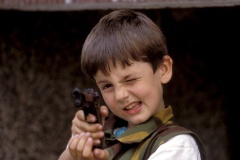
Paul Lowe was born on 6 November 1963 in London and grew up in Liverpool. He graduated from the University of Cambridge in 1986 with a BA in history and philosophy. He earned a BTEC in documentary photography from Gwent College of Higher Education; and a PhD in photography from the University of the Arts London.
He worked as a photojournalist in more than 80 countries from the 1980s to the 2000s. The first major event he covered was the fall of the Berlin Wall and went on to cover the Romanian Revolution, Nelson Mandela's release from prison, the Yugoslav Wars, the destruction of Grozny, and famine in Africa.
He was course leader of the MA in Photojournalism and Documentary Photography at the London College of Communication; a visiting professor in war studies at King's College London; and taught at an academy through the VII Foundation. His books and lectures, many of which dealt with the history of photojournalism and the ethics of representing human suffering through images, often spoke of photography's potential to help bear witness to atrocities.
He tragically died in northern Los Angeles County, United States, on 12 October 2024.
He worked as a photojournalist in more than 80 countries from the 1980s to the 2000s. The first major event he covered was the fall of the Berlin Wall and went on to cover the Romanian Revolution, Nelson Mandela's release from prison, the Yugoslav Wars, the destruction of Grozny, and famine in Africa.
He was course leader of the MA in Photojournalism and Documentary Photography at the London College of Communication; a visiting professor in war studies at King's College London; and taught at an academy through the VII Foundation. His books and lectures, many of which dealt with the history of photojournalism and the ethics of representing human suffering through images, often spoke of photography's potential to help bear witness to atrocities.
He tragically died in northern Los Angeles County, United States, on 12 October 2024.

Luigi Baldelli is a professional photographer since 1987 and from 2014 he’s a video maker/director.
Since 1989 it has been following the most important international events: the end of totalitarian regimes in the East of Europe, the revolution in Romania, Lebanon, The Gulf War, the war in former Yugoslavia, the crisis in Albania, the socio-political situation in the Middle East, wars and famine in Africa.
From 1995 to 2015, he worked with Ettore Mo, special correspondent of Italian newspaper Corriere della Sera and one of the most important Italian journalists. Together they produce reportage in Afghanistan, India, Middle and Far East, East of Europe, Africa, ex-Soviet Union, Latin America.
His photographs have been published by the major Italian and foreign newspapers, and several photos have been in individual and collective exhibitions on journalistic photography, both in Italy and abroad.
In 2006, 36 photographs taken in Afghanistan were used for the illustrated edition of “The Kite Runner”, a best-selling title, in Italy, The Netherlands, Brazil, The U.S.A. and China
In 2009 48 more photographs taken in Afghanistan were used, instead, for the illustrated edition of “One thousand splendid suns”, published in Italy and the Netherlands.
In 2014 made the documentary “Ebola in Sierra Leone”
In 2019 made the documentary “Ethiopia Daily Fight for Recycling”
Since 2014 he is Sony ambassador.
His Facebook page: https://www.facebook.com/luigi.baldelli.3
And you can reach him at his Instagram page: https://www.instagram.com/luigibaldelli
Since 1989 it has been following the most important international events: the end of totalitarian regimes in the East of Europe, the revolution in Romania, Lebanon, The Gulf War, the war in former Yugoslavia, the crisis in Albania, the socio-political situation in the Middle East, wars and famine in Africa.
From 1995 to 2015, he worked with Ettore Mo, special correspondent of Italian newspaper Corriere della Sera and one of the most important Italian journalists. Together they produce reportage in Afghanistan, India, Middle and Far East, East of Europe, Africa, ex-Soviet Union, Latin America.
His photographs have been published by the major Italian and foreign newspapers, and several photos have been in individual and collective exhibitions on journalistic photography, both in Italy and abroad.
In 2006, 36 photographs taken in Afghanistan were used for the illustrated edition of “The Kite Runner”, a best-selling title, in Italy, The Netherlands, Brazil, The U.S.A. and China
In 2009 48 more photographs taken in Afghanistan were used, instead, for the illustrated edition of “One thousand splendid suns”, published in Italy and the Netherlands.
In 2014 made the documentary “Ebola in Sierra Leone”
In 2019 made the documentary “Ethiopia Daily Fight for Recycling”
Since 2014 he is Sony ambassador.
His Facebook page: https://www.facebook.com/luigi.baldelli.3
And you can reach him at his Instagram page: https://www.instagram.com/luigibaldelli
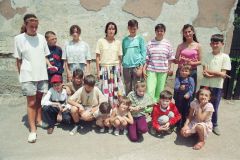
Thomas James Hurst grew up in Mill Valley, Calif. He first picked up a camera, an old Nikormat, at the age of 21 when he went to Bosnia in 1992. After returning to Bosnia a second time in 1993, he decided to study photojournalism at San Francisco State University.
During winter and summer breaks, he traveled to Haiti, Afghanistan and Rwanda and also interned at daily newspapers. His work has appeared in such publications as Time magazine, The New York Times and The Boston Globe.
In 1997, he worked as a staff photographer for The Boston Globe. Two years later, following his coverage of the war in Kosovo, he began working for The Seattle Times.
Thomas spent a month in Iraq in 2004 and in 2005 covered the devastating earthquake in the Kashmir region of Pakistan, earning him the Photograph of the Year award by Editor and Publisher magazine.
His work has been honored several times by World Press Photo, The Associated Press, the Society of Professional Journalists, and he was a finalist for the Pulitzer Prize for his contribution to The Seattle Times staff’s coverage of the WTO riots in 1999. http://www.thomashurst.com
During winter and summer breaks, he traveled to Haiti, Afghanistan and Rwanda and also interned at daily newspapers. His work has appeared in such publications as Time magazine, The New York Times and The Boston Globe.
In 1997, he worked as a staff photographer for The Boston Globe. Two years later, following his coverage of the war in Kosovo, he began working for The Seattle Times.
Thomas spent a month in Iraq in 2004 and in 2005 covered the devastating earthquake in the Kashmir region of Pakistan, earning him the Photograph of the Year award by Editor and Publisher magazine.
His work has been honored several times by World Press Photo, The Associated Press, the Society of Professional Journalists, and he was a finalist for the Pulitzer Prize for his contribution to The Seattle Times staff’s coverage of the WTO riots in 1999. http://www.thomashurst.com
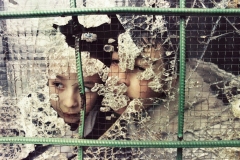
Corinne Dufka has decades of experience documenting the impact of conflict on civilians. From 1988 to 1999, she worked with Reuters as a photojournalist covering wars in El Salvador, Bosnia and Africa. From 1999 to 2022 she worked as a researcher and advocate for Human Rights Watch documenting war crimes in West Africa. She now works as a consultant, helping mitigate the impact of war on civilians. In 2023, G-Editions published “This is War: Photographs from a Decade of Conflict,” of Dufka’s images while a war photographer.
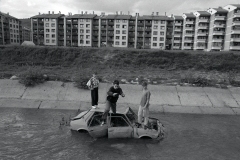
Frankie Quinn (b.1966) was born into the Short Strand/Ballymacarrett community in Belfast where he still lives.
He began taking photographs in 1982.
He holds an MFA in photography from the University of Ulster and is currently Director of the Belfast Archive Project.
www.frankiequinn.com
He began taking photographs in 1982.
He holds an MFA in photography from the University of Ulster and is currently Director of the Belfast Archive Project.
www.frankiequinn.com
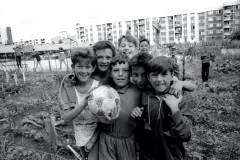
Award-winning filmmaker & photojournalist, Fiona Lloyd-Davies has been making films and taking pictures about human rights issues in areas of conflict since 1992. She is known for her integrity, innovation and passion. Fiona came to this genre through an ad hoc trip to Bosnia in the first few months of the war in 1992. It led to her working with Clive Gordon on his BAFTA winning documentary The Unforgiving. She continued working in Bosnia throughout the war and after the peace, and it triggered her passion for exposing human rights issues and bringing stories from areas of conflict to a wider audience. Over the last thirty years Fiona has worked for many broadcasters and NGO’s focussing on exposing human rights and supporting survivors. She’s been awarded two Royal Television Society Awards, the first for a film about honour killing in Pakistan, Licence to Kill for BBC2’s Correspondent programme, and the second for a series of short films (22) with Salam Pax the Baghdad Blogger for BBC2’s Newsnight. These were the only films to come out of Iraq between 2003 to 2006, consistently showing daily life from the Iraqi perspective.
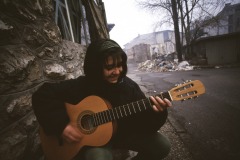
Marleen Daniels was born on 4 October 1958 in Heusden-Zolder, Limburg. She is a Belgian photographer. Educated in St Lucas, Hasselt and Technicum, Antwerp, she started as freelancer photographer in the eighties, and became fully independent in 1984. Until 1989 she was working mainly for the newspaper Het Belang van Limburg. In 1989 a year of political turmoil, she covered Lebanon, Beyrouth with journalist Marc Hoogsteyns during the last days of Michel Aoun. With the late journalist Hans Klok she traveled through South America, covering the fate of the Amazon Rainforest and the elections in Chile. Later that year they covered the revolution in Romania and the fall of Nicolae Ceauşescu for Het Belang van Limburg From that period on she was attached to the French agency Gamma, regularly providing pictures from hot spots around the world. During the nineties she covered the orphans of Romania, Chernobyl 10 years later, spring in Albania, the first Iraq War, and the Jordanian and Kurdish refugee crisis.. For these features she was rewarded the Belgian Fuji Press Photo Award in 1994.
In the summer of 1992 the war in former Yugoslavia broke out and soon after the war in Bosnia, Sarajevo became her home base for the next two years. Her war work was published in International magazines Stern, Paris Match, Time, Newsweek, New York Times Magazine, El Mundo and Belgian magazines De Standaard Magazine, De Morgen, Panorama.
Together with the Belgian writer Rudi Rotthier whom she met in Belgrade, Serbia in 1993, she photographed child labour in India, resulting in the book 'Children of the Crocodile'. Simultaneously with the upcoming Belgian fashion designers, she began a career as fashion photographer. She traveled to Milan and Paris, first _in 1989_ as commissioned photographer for '"Het Belang Van Limburg", later for the entire Belgian Press and for Designers such as Dries van Noten, Ann Demeulemeester, Dirk Bikkembergs, Raf Simons, Veronique Branquinho.
Mid 1990 Marleen joined the Dutch photo agency Hollandse Hoogte and started photographing for the Dutch Elle. The co-production with fashion editor Cara Schiffelers of the Japanese fashion icon Yohji Yamamoto was the start of a successful working relationship. Her portraits and fashion reports were published in Dutch Elle, Elegance, Glamour, La vie en Rose, Vrij Nederland, De Volkskrant magazine, Hollands Diep. The Dutch National Geographic commissioned Marleen to photograph Antwerp and the diamond trade. Since 2010 she regularly photographs travel stories for the Holland Herald, the KLM inflight magazine and for DSM, the Weekend supplement of 'De Standaard', Belgium's main www.standaard.be Flemish newspaper. For the book Werken met woorden, 30 interviews with famous fashion designers by the Belgian fashion journalist Veerle Windels, published in 2009, Marleen Daniels provided the pictures. In 2010, Marleen was honored with the Eikenloof Award of Heusden-Zolder, the village she originates from. She is the first woman to receive this three yearly cultural reward for her career as photographer.
She is married to the Welsh photographer Andrew Thomas and lives in Antwerp, Belgium. https://www.marleendaniels.com
https://www.instagram.com/marleendaniels/
In the summer of 1992 the war in former Yugoslavia broke out and soon after the war in Bosnia, Sarajevo became her home base for the next two years. Her war work was published in International magazines Stern, Paris Match, Time, Newsweek, New York Times Magazine, El Mundo and Belgian magazines De Standaard Magazine, De Morgen, Panorama.
Together with the Belgian writer Rudi Rotthier whom she met in Belgrade, Serbia in 1993, she photographed child labour in India, resulting in the book 'Children of the Crocodile'. Simultaneously with the upcoming Belgian fashion designers, she began a career as fashion photographer. She traveled to Milan and Paris, first _in 1989_ as commissioned photographer for '"Het Belang Van Limburg", later for the entire Belgian Press and for Designers such as Dries van Noten, Ann Demeulemeester, Dirk Bikkembergs, Raf Simons, Veronique Branquinho.
Mid 1990 Marleen joined the Dutch photo agency Hollandse Hoogte and started photographing for the Dutch Elle. The co-production with fashion editor Cara Schiffelers of the Japanese fashion icon Yohji Yamamoto was the start of a successful working relationship. Her portraits and fashion reports were published in Dutch Elle, Elegance, Glamour, La vie en Rose, Vrij Nederland, De Volkskrant magazine, Hollands Diep. The Dutch National Geographic commissioned Marleen to photograph Antwerp and the diamond trade. Since 2010 she regularly photographs travel stories for the Holland Herald, the KLM inflight magazine and for DSM, the Weekend supplement of 'De Standaard', Belgium's main www.standaard.be Flemish newspaper. For the book Werken met woorden, 30 interviews with famous fashion designers by the Belgian fashion journalist Veerle Windels, published in 2009, Marleen Daniels provided the pictures. In 2010, Marleen was honored with the Eikenloof Award of Heusden-Zolder, the village she originates from. She is the first woman to receive this three yearly cultural reward for her career as photographer.
She is married to the Welsh photographer Andrew Thomas and lives in Antwerp, Belgium. https://www.marleendaniels.com
https://www.instagram.com/marleendaniels/
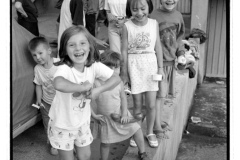
Staffan Löfving, born in 1967, is an anthropologist based at Karlstad University and the University of Johannesburg. In the late 1980s and early 1990s, he pursued a career in photojournalism, taking him to zones of armed conflict in Latin America and Asia, to Mostar in 1993, and besieged Sarajevo in 1994. This sample of images from September 1994 was curated by artist and gallerist Saša Bukvić
(1949 – 2023) for an exhibition in Gallery Zvono in Sarajevo in 2016. It forms part of Staffan Löfving’s long-term research engagement in visual anthropology and his efforts at understanding the social and political currency of wartime photographs in post-war societies. The collection has been donated to the History Museum of Bosnia and Herzegovina. www.kau.se/en/researchers/staffan-lofving
(1949 – 2023) for an exhibition in Gallery Zvono in Sarajevo in 2016. It forms part of Staffan Löfving’s long-term research engagement in visual anthropology and his efforts at understanding the social and political currency of wartime photographs in post-war societies. The collection has been donated to the History Museum of Bosnia and Herzegovina. www.kau.se/en/researchers/staffan-lofving
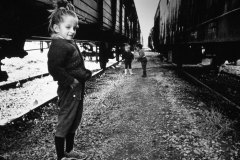
Debbi Morello was a professional photojournalist for nearly 15 years. Based in Washington, D.C. she worked with news and aid organizations worldwide.
She has been based in Haiti, covered the wars in Bosnia and Chechnya, while based in Africa, covered Rwanda, Zaire, Uganda, Kenya and Sudan, and has worked in Iraq and Afghanistan. She has freelanced for The New York Times, The Washington Post, Life Magazine, Time and Newsweek and U.S. News and World Report. Her work won the prestigious International Pictures of the Year International competition for Photojournalism four times, and Best in Show at the annual Women in Photojournalism Conference. U.S. News and World Report featured one of her images from Goma, Zaire in their anniversary issue featuring top images of the 1990s.
www.debbimorello.com
She has been based in Haiti, covered the wars in Bosnia and Chechnya, while based in Africa, covered Rwanda, Zaire, Uganda, Kenya and Sudan, and has worked in Iraq and Afghanistan. She has freelanced for The New York Times, The Washington Post, Life Magazine, Time and Newsweek and U.S. News and World Report. Her work won the prestigious International Pictures of the Year International competition for Photojournalism four times, and Best in Show at the annual Women in Photojournalism Conference. U.S. News and World Report featured one of her images from Goma, Zaire in their anniversary issue featuring top images of the 1990s.
www.debbimorello.com
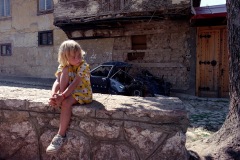
Sandra Balsells (Barcelona,1966).
In 1989, after graduating in journalism at the Universidad Autónoma of Barcelona, she moved to London where she began her career in the field of photojournalism. There, after completing a Postgraduate Diploma in Photojournalism at London College of Printing, she began her career as a freelance photographer.
In 1991, coinciding with the breakup of former Yugoslavia, she covers the outbreak of war in Croatia collaborating as a freelance photographer with the British newspaper The Times.
Between 1991 and the end of 2000, much of her photographic career focuses on the Balkans, where she documents the most significant events of successive Yugoslav wars in Croatia, Bosnia-Herzegovina, Serbia and Kosovo, working with various national and foreign media. She has also worked on numerous features in Israel, Palestine, Mexico, Romania, Canada, Cuba, Mozambique, Haiti and Sicily.
Is the author of Balkan in memoriam (Blume, 2002), an extensive photographic work through the most turbulent decade in former Yugoslavia; and coauthor of Montreal Metropole vue par 30 grands reporters (Aux Yeux du Monde, 2000). In the television field, she is the co-author of the documentary films Dying for the Truth (Channel 4, 1994) and Portraits of the Soul (TVC, 2004).
She has participated in over fifty solo and group exhibitions and her work appears in various public and private collections.
In 2006 she won the Ortega y Gasset Prize in the category “Best News Feature” for her work on the war and postwar years in former Yugoslavia.
In 2007, she participated in the project Universal Archive. The Condition of the Document and the Modern Photographic Utopia organized by the Museum of Contemporary Art of Barcelona (MACBA).
In recent years she has curated several photographic projects among them Latidos de un mundo convulso (Lunwerg-Caja Madrid, 2007) an extensive work that includes a selection of the best photojournalism in Spain over the past 25 years where she also participates as a co-author; and Desaparecidos (2011), a documentary project of the photojournalist Gervasio Sánchez focused on the issue of enforced disappearance and displayed simultaneously at the Museum of Contemporary Art of Castilla and León, Center of Contemporary Culture of Barcelona and La Casa Encendida of Madrid.
Since 1995 she has been combining her work as a photojournalist with the teaching of photography at the University Ramon Llull of Barcelona. www.sandrabalsells.com
In 1989, after graduating in journalism at the Universidad Autónoma of Barcelona, she moved to London where she began her career in the field of photojournalism. There, after completing a Postgraduate Diploma in Photojournalism at London College of Printing, she began her career as a freelance photographer.
In 1991, coinciding with the breakup of former Yugoslavia, she covers the outbreak of war in Croatia collaborating as a freelance photographer with the British newspaper The Times.
Between 1991 and the end of 2000, much of her photographic career focuses on the Balkans, where she documents the most significant events of successive Yugoslav wars in Croatia, Bosnia-Herzegovina, Serbia and Kosovo, working with various national and foreign media. She has also worked on numerous features in Israel, Palestine, Mexico, Romania, Canada, Cuba, Mozambique, Haiti and Sicily.
Is the author of Balkan in memoriam (Blume, 2002), an extensive photographic work through the most turbulent decade in former Yugoslavia; and coauthor of Montreal Metropole vue par 30 grands reporters (Aux Yeux du Monde, 2000). In the television field, she is the co-author of the documentary films Dying for the Truth (Channel 4, 1994) and Portraits of the Soul (TVC, 2004).
She has participated in over fifty solo and group exhibitions and her work appears in various public and private collections.
In 2006 she won the Ortega y Gasset Prize in the category “Best News Feature” for her work on the war and postwar years in former Yugoslavia.
In 2007, she participated in the project Universal Archive. The Condition of the Document and the Modern Photographic Utopia organized by the Museum of Contemporary Art of Barcelona (MACBA).
In recent years she has curated several photographic projects among them Latidos de un mundo convulso (Lunwerg-Caja Madrid, 2007) an extensive work that includes a selection of the best photojournalism in Spain over the past 25 years where she also participates as a co-author; and Desaparecidos (2011), a documentary project of the photojournalist Gervasio Sánchez focused on the issue of enforced disappearance and displayed simultaneously at the Museum of Contemporary Art of Castilla and León, Center of Contemporary Culture of Barcelona and La Casa Encendida of Madrid.
Since 1995 she has been combining her work as a photojournalist with the teaching of photography at the University Ramon Llull of Barcelona. www.sandrabalsells.com
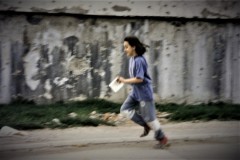
The Austrian journalist Heidi Rinke-Jarosch (born in 1959) lived and worked in many different countries for many years. She covered the war in Yugoslavia from beginning to end. In 1995 and 1996 she lived in Sarajevo. Meanwhile Heidi returned to her hometown of Bregenz where she continues working as a journalist and author. But through her friends in Sarajevo she always feels connected to the city.
email: hjrinke@aol.com
email: hjrinke@aol.com
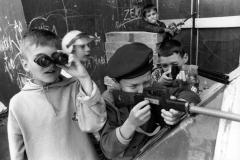
Tomas ‘Tomo’ Muscionico grew up in a small village in the German speaking part of the Swiss Alps. After attending the Photography academy at Zurich’s School of Art and Design he moved to New York where he got invited to join prestigious Photo Agency CONTACT Press Images in 1989.For the next two decades Muscionico could be found covering political events and conflicts around the Globe. As much as he despises the word ‘war photographer’ he ended up many years documenting along the frontlines of international conflicts, From the Fall of the Berlin wall and burning oil wells of the Gulf war to the ethnic conflagration in Bosnia, Somalia, Chechnya and Rwanda. He also photographed the rise of world leaders like Nelson Mandela, Bill Clinton and Vaclav Havel, Czechoslovakia’s first democratically elected President, for whom he won a first prize in the World Press Photo Contest in 1990. Tomo has long been drawn to and fascinated by the margins of society in America which he documented extensively over the last 25 years.In 2004 Muscionico left NYC, relocating on the west coast in an attempt to rediscover his medium and redefine his relationship to it. His journey took him through the desert lights of Las Vegas. Fascinated by the color and intensity of the world’s most famous oasis, he dropped his bags and set up shop. The next 8 years were spent collaborating with Cirque du Soleil - under the supervision of Pierre Desmarais, Cirque’s Montreal based Creative Director, Muscionico photographed new Show Productions such as Zumanity, KA, Viva Elvis and LOVE by The Beatles. His work with Cirque du Soleil encapsulated his evolution from documentarian to an artistic image maker with vision and style. Muscionico’s work since has continued to grow in complexity and vision as his focus has moved from the reportage that was his trade to the lifestyle, beauty and advertising work that is now his passion. Muscionico, you could say, has finally completed his journey west.He now splits his time between Los Angeles, Vegas and New York City.His Work has appeared in TIME, Paris Match, Forbes, Life Magazine, STERN, GQ and VanityFair to name a few.
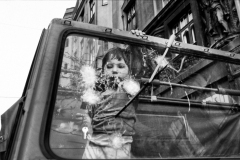
Patricia Franceschetti was born in Neuchâtel (Switzerland) in 1964, lived and studied in Turin (Italy) until 1984, when she moved to London. While working to earn her living and studying photography, she met and became the assistant to Romano Cagnoni.
While pursuing her own diverse subjects, she began to publish her photographic stories and articles in several magazines and continued to do so as she returned to Italy in 1986, where she won an award, and participated in collective and solo exhibitions. She continued to work alongside Romano, and the two married in 2000. Together they traveled to the most turbulent places and published stories together.
When Romano Cagnoni passed away, she founded the Romano Cagnoni Foundation. She collaborates with international sculptors on projects and catalogues. http://www.patriciafranceschetti.com
While pursuing her own diverse subjects, she began to publish her photographic stories and articles in several magazines and continued to do so as she returned to Italy in 1986, where she won an award, and participated in collective and solo exhibitions. She continued to work alongside Romano, and the two married in 2000. Together they traveled to the most turbulent places and published stories together.
When Romano Cagnoni passed away, she founded the Romano Cagnoni Foundation. She collaborates with international sculptors on projects and catalogues. http://www.patriciafranceschetti.com

Sean McKernan is an accomplished and internationally respected photographer who had documented the social, cultural and political life of Belfast over the past 45 years. In 1983 he Co-Founded the award-winning Belfast Exposed project which he Directed until 2001. His distinctive style of work resonates with the communities he portrays and has been exhibited throughout Europe, Australia and America and is housed in many private collections both at home & abroad. Sean visitied Sarajevo in 1996 and shared his works with us.
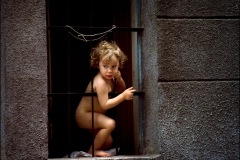
Rikard Larma was born in Zavidovići, a small town in central Bosnia, on 2 April in 1954. He graduated from the High School of photography and since then he has been working, learning, creating, promoting and living photography his whole life. His first teacher was his father Leopold, then as a photography expert he improved his skills at photography courses in the upper grades of an elementary school in Sarajevo. Rikard has been a professional photojournalist since he was 20 years old, beginning his career in Sarajevo in 1974. He was working in different editions of the newspaper Oslobođenje from Sarajevo, Sportske novine, Večernje novine, Ven, Svijet, As, Orbis, Arka, San and several other prominent magazines in Bosnia and Herzegovina. When war came to his hometown of Sarajevo in 1992, Rikard swiftly evolved from a general news and feature photographer to war photojournalist. He worked as staff photographer for the Associated Press, covering the Siege of Sarajevo and the war’s aftermath from 1992 to 1997. When the war ended, he married, moved to Jerusalem and began to raise a family. He lived and worked there for six years, photographing the Israeli-Palestinian conflict. In 2003, he settled down in the United States and began working for Metro Philadelphia newspaper in 2004. Rikard started photographing ‘Painting with Light’ artwork in 2008 while working as staff photographer and photo editor for the daily newspaper.

Georges Bartoli (1957) is a french photographer from Catalan origin based in Perpignan.
After some years of collaboration with the local press he began working for french national medias like L’Humanité, Liberation, Le Monde and also for several agencies like Gamma, Rea, AFP and Reuters.
He is now completely independent and his work and archival is available on the cooperative website www.divergence-images.com
Specialised in social and political matters he covered also some conflict areas like Yemen, Bosnia, Palestina, Algeria and south American countries like Colombia and Nicaragua.
He was in Sarajevo in 1995 June and July covering actuality for the french newspaper L’Humanité and obtained the golden visa of the daily press international that same year.
After some years of collaboration with the local press he began working for french national medias like L’Humanité, Liberation, Le Monde and also for several agencies like Gamma, Rea, AFP and Reuters.
He is now completely independent and his work and archival is available on the cooperative website www.divergence-images.com
Specialised in social and political matters he covered also some conflict areas like Yemen, Bosnia, Palestina, Algeria and south American countries like Colombia and Nicaragua.
He was in Sarajevo in 1995 June and July covering actuality for the french newspaper L’Humanité and obtained the golden visa of the daily press international that same year.
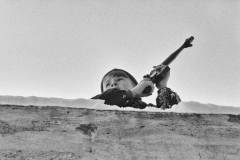
Derek Hudson is specialised in documentary and portrait photography for which he has received awards from the World Press Photo organisation of Amsterdam, honoured by the Art Director's Club of New York and received numerous accolades for his still photography skills worldwide.
Hugely experienced in visual storytelling he chose early in his career to document conflicts worldwide, reacting to news events at a moment's notice from London, New York and Paris, cities in which he has been previously based. Following a harrowing experience when covering the overthrow of Taliban rule in Afghanistan he forsake the peril of documenting conflict and turned his lens to less precarious editorial commissions. In collaboration with bosom friend and travel companion, French author Jacques Maigne (see Naples, Tangiers and Alexandria in Commissions) he has produced essays on numerous subjects in a multitude of countries.
In the course of his career he has worked on commissions for Time, Newsweek, Sunday Times Magazine, The Observer, New York Magazine, Vanity Fair, Financial Times magazine, Stern, Télérama, Le Monde, Paris Match, Vogue France, Gruner + Jahr - Geo Magazine. His proudest accolade, a goal he set himself in his early 20's, came when honoured with his name on the masthead of LIFE magazine as one of their London based photographers until the closure of the foremost pictorial title in 2000. http://www.derekhudson.com
Hugely experienced in visual storytelling he chose early in his career to document conflicts worldwide, reacting to news events at a moment's notice from London, New York and Paris, cities in which he has been previously based. Following a harrowing experience when covering the overthrow of Taliban rule in Afghanistan he forsake the peril of documenting conflict and turned his lens to less precarious editorial commissions. In collaboration with bosom friend and travel companion, French author Jacques Maigne (see Naples, Tangiers and Alexandria in Commissions) he has produced essays on numerous subjects in a multitude of countries.
In the course of his career he has worked on commissions for Time, Newsweek, Sunday Times Magazine, The Observer, New York Magazine, Vanity Fair, Financial Times magazine, Stern, Télérama, Le Monde, Paris Match, Vogue France, Gruner + Jahr - Geo Magazine. His proudest accolade, a goal he set himself in his early 20's, came when honoured with his name on the masthead of LIFE magazine as one of their London based photographers until the closure of the foremost pictorial title in 2000. http://www.derekhudson.com
Manoocher Deghati was born in Iran in 1954 and studied cinematography in Rome before returning to his home country to work with Agence France-Presse (AFP) and several Iranian publications, including Iranweek and Aftab. He has worked as a correspondent for Sipa Press, Time & Life, Black Star and Newsweek in Iran, as well as for Sipa in Los Angeles and as the AFP correspondent for North Africa and the Middle East. Deghati was director of the AFP photo department for Central America from 1987 to 1991, and for the Middle East from 1991 to 1996. He is founder and director of the AINA Photojournalism Institute in Kabul and was creator and head of the photo unit at UN-OCHA/IRIN, the United Nations humanitarian news agency, based in Nairobi, Kenya. Manoocher’s work has appeared in such publications as Geo, Paris Match, Le Figaro and National Geographic. Deghati was the regional photo manager for The Associated Press Middle East between January 2011 and April 2013 in Cairo, Egypt. He is now based in Southen Italy.
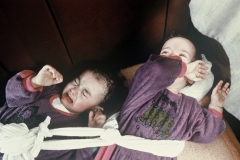
Christoph Püschner was born in Münsterland in 1958 and he grew up in Herford in East Westphalia. Christoph completed an apprenticeship as a retail salesman in 1977 and after his later studies at the University of Applied Sciences for Photo Design in Bielefeld he began working as a freelance photojournalist in November 1989. Initially, Christoph worked in crisis and war reporting, social and travel reportage for German and European news and travel magazines. Working in teams with writing colleagues, he has covered Africa, the Middle East, Russia, the countries of the former Soviet Union, the Balkans, North America and Southeast Asia. After moving from the Cologne-based agency Laif to the Stuttgart-based agency Zeitenspiegel in 1999, Christoph mainly produce photo and video reports for aid organizations in addition to journalistic foreign reporting.
www.pueschner-photographie.de
www.pueschner-photographie.de
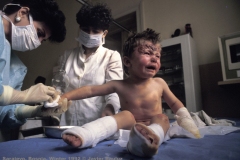
Javier Bauluz (1960, Spain) is a winner of the Pulitzer Prize for news photography in 1995 with the Associated Press in Rwanda and the Journalism and Human Rights Award in 2006 and 2017, among many others. He is a photographer and journalist mostly covering human rights issues.
He also has worked for Reuters and Staff and published his work in The New York Times, El País. Magazine de La Vanguardia, El Mundo, Time, Univision, BBC and Aljazeera, among others. He covered the wars in Central America in the late 1980s, Pinochet’s last years in power, the first Palestinian Intifada, war in Bosnia 1992-1995, the Rwanda crisis and waves of migration to Spain and Europe since 1996. and the Asturian Miners. He has also produced in-depth reports and documentaries from Latin America, Africa and the Near East.
After photographing Christmas 1992 in Sarajevo, he organized a humanitarian aid campaign and with several volunteers transported the convoy from Asturias to the Bosnian hospital in Mostar.
His last works are about the actual crisis #SOSNicaragua, the Migrant Caravan in front of Trump wall, the Migrants on the Spanish border and "Seeking Refuge for my children".
He has addressed several national and international seminars, workshops, masterclasses and was a professor of photojournalism at Madrid’s IE University and at Barcelonas´s Pompeu Fabra University and other universities. He is the director of the International Festival of Photojournalism of Gijón, Spain, since 1997, and directed the International Photojournalism Workshop at Oviedo University during 15 years with more than 250 students.
He was one of the promoters of the 2008 Declaration on Journalism and Human Rights.
He founded Human Journalism (Periodismo Humano), a professional journalism media focused on human rights and has directed it since 2010.
https://javierbauluz.photoshelter.com
He also has worked for Reuters and Staff and published his work in The New York Times, El País. Magazine de La Vanguardia, El Mundo, Time, Univision, BBC and Aljazeera, among others. He covered the wars in Central America in the late 1980s, Pinochet’s last years in power, the first Palestinian Intifada, war in Bosnia 1992-1995, the Rwanda crisis and waves of migration to Spain and Europe since 1996. and the Asturian Miners. He has also produced in-depth reports and documentaries from Latin America, Africa and the Near East.
After photographing Christmas 1992 in Sarajevo, he organized a humanitarian aid campaign and with several volunteers transported the convoy from Asturias to the Bosnian hospital in Mostar.
His last works are about the actual crisis #SOSNicaragua, the Migrant Caravan in front of Trump wall, the Migrants on the Spanish border and "Seeking Refuge for my children".
He has addressed several national and international seminars, workshops, masterclasses and was a professor of photojournalism at Madrid’s IE University and at Barcelonas´s Pompeu Fabra University and other universities. He is the director of the International Festival of Photojournalism of Gijón, Spain, since 1997, and directed the International Photojournalism Workshop at Oviedo University during 15 years with more than 250 students.
He was one of the promoters of the 2008 Declaration on Journalism and Human Rights.
He founded Human Journalism (Periodismo Humano), a professional journalism media focused on human rights and has directed it since 2010.
https://javierbauluz.photoshelter.com
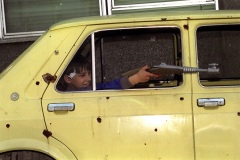
Enric Martí began his career as a photo assistant with Agence France-Presse in Managua, Nicaragua in 1989, and then worked as a local stringer for Reuters. In 1992 he moved to Sarajevo as a freelancer, later joining EPA. In 1994 he began working for The Associated Press in the Balkans, moving on to Cairo to become the AP's senior photographer for the Middle East for six years. From 2002 until 2006 he served as chief photo editor/photographer in Jerusalem. From 2006 to 2017 he was in charge of the Latin America & Caribbean photo department based in Mexico City. Martí's awards include a World Press Photo award, three Fotopress awards, an Ortega y Gasset prize in his native Spain and the 2001 Bayeaux award for war photography. He previously sat on the 2008 and 2011 World Press Photo jury. After 5 years based in New York and is now based in his hometown of Barcelona as Deputy Director of Photography for the AP.
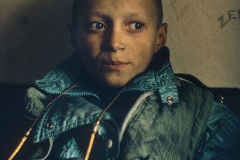
Frank Fournier, born in France, has been a New Yorker since October 1976. A Time & Life Magazine contributor for more than twenty years is a deeply humanistic photographer concerned by social and political issues. His work has been published and exhibited extensively in the United States, in Europe, Asia, Australia and South America. Frank Fournier is a member of Contact Press Images since 1977. His work can be found in museums and private collections.
January 2020 to June 2020 Leica San Francisco
November 2020 to June 2020 Leica Washington, DC
February 2022 Dubai "The Red Eye” at Xposure
April 2022 Leica Gallery San Francisco
November 2022 GalleryX, Al Majaz Amphitheater, Sharjah, United Arab Emirates
January 2020 to June 2020 Leica San Francisco
November 2020 to June 2020 Leica Washington, DC
February 2022 Dubai "The Red Eye” at Xposure
April 2022 Leica Gallery San Francisco
November 2022 GalleryX, Al Majaz Amphitheater, Sharjah, United Arab Emirates

Patrick McCarthy has worked with the Bosnian community since 1993. McCarthy traveled to wartime Sarajevo in 1994 to provide humanitarian assistance, entering the city by way of the tunnel under the airport.
The same year, McCarthy founded the St. Louis Bosnian Student Project, which located scholarships for Bosnian student refugees.
Patrick is the author of After the Fall: Srebrenica Survivors in St. Louis, a companion volume to an exhibit at the Missouri Historical Society that drew 55,000 visitors in the year 2000.
With Akif Cogo, Patrick co-authored Bosnian St. Louis: Between Two Worlds (2022). An honorary member of the Bosnian Herzegovinian American Academy of Arts and Sciences, McCarthy served as adviser to the traveling exhibit, "Prijedor: Lives from the Bosnian Genocide."
McCarthy’s professional work is as a Professor and Associate Dean at Saint Louis University, where he directs the Medical Center Library.
He now coordinates the Working Group for BiH that seeks align US policy for NATO and EU Membership for BIH, outlawing genocide denial in Bosnia and the glorification of war criminals, and needed Consitutional changes in BiH.
The same year, McCarthy founded the St. Louis Bosnian Student Project, which located scholarships for Bosnian student refugees.
Patrick is the author of After the Fall: Srebrenica Survivors in St. Louis, a companion volume to an exhibit at the Missouri Historical Society that drew 55,000 visitors in the year 2000.
With Akif Cogo, Patrick co-authored Bosnian St. Louis: Between Two Worlds (2022). An honorary member of the Bosnian Herzegovinian American Academy of Arts and Sciences, McCarthy served as adviser to the traveling exhibit, "Prijedor: Lives from the Bosnian Genocide."
McCarthy’s professional work is as a Professor and Associate Dean at Saint Louis University, where he directs the Medical Center Library.
He now coordinates the Working Group for BiH that seeks align US policy for NATO and EU Membership for BIH, outlawing genocide denial in Bosnia and the glorification of war criminals, and needed Consitutional changes in BiH.
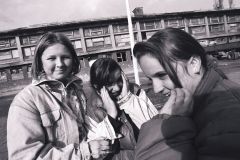
Pierre Ouzeau, born in 1968, lives and works in Périgueux (France). Today he is an artistic director and photographer.
Press photographer from 1989 to 1996, he went to Hranisca, in the suburbs of Sarajevo, in October-November 1995 to photograph youth there in times of war.
Press photographer from 1989 to 1996, he went to Hranisca, in the suburbs of Sarajevo, in October-November 1995 to photograph youth there in times of war.
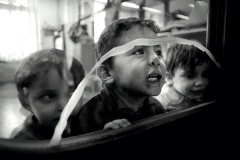
Howard Sayer began working as a press photographer in London in the early
1990s. In 1995 he travelled overland into Sarajevo from the UK in an ambulance
which was donated to the city’s fire service and used to carry humanitarian aid
to the Orphanage. His work for NGOs took him across Bosnia and the Balkan
states documenting the refugee crises in Krajina, Tuzla and Kosovo and in 2000
he returned to Sarajevo in 2000 to capture the rebuilding of the city. During the
1990s Howard also photographed the refugee crisis in Rwanda and conflict in
Sudan. Howard continues to work to this day as a press and publicity
photographer www.howardsayer.com
1990s. In 1995 he travelled overland into Sarajevo from the UK in an ambulance
which was donated to the city’s fire service and used to carry humanitarian aid
to the Orphanage. His work for NGOs took him across Bosnia and the Balkan
states documenting the refugee crises in Krajina, Tuzla and Kosovo and in 2000
he returned to Sarajevo in 2000 to capture the rebuilding of the city. During the
1990s Howard also photographed the refugee crisis in Rwanda and conflict in
Sudan. Howard continues to work to this day as a press and publicity
photographer www.howardsayer.com
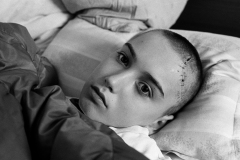
Rođen je 27. travnja 1959. u Brčkom, Bosna i Hercegovina. Profesionalni je fotograf i pisac, a posljednjih se godina sve više bavi i grafičkim i produkt dizajnom. Svoju profesionalnu karijeru započeo je u magazinu “Start ” i tjedniku “Danas”. Dosada je objavio dvadesetak autorskih knjiga, u kojima često kombinira svoje fotografsko i književno umijeće, a koautor je i na više skupnih knjiga. Knjige objavljuje u zemlji i inozemstvu. Za svoj je fotografski i književni rad više puta nagrađivan, uglavnom u inozemstvu. Njemačko izdanje njegove knjige Ein Jahr in der Hölle (Sezona pakla – Sarajevo Anno Domini 1993) proglašeno je u Njemačkoj knjigom mjeseca. Knjiga Entseeltes Land, koju je 1995. objavio jedan od najuglednijih njemačkih nakladnika Herder Verlag iz Freiburga, bila je mjesecima pri vrhu njemačkih bestseler ljestvica. U kazališnoj sezoni 1995/96. bečki Theater der Jugend postavlja kazališnu predstavu u kojoj se koriste dijelovima tekstova iz njegovih knjiga Dnevnik smrti i Sezona pakla. Knjiga Papa u Hrvata dobila je brončanu plaketu SAPPI u konkurenciji najbolje tiskanih knjiga svijeta za 1997., a knjiga Papa u Sarajevu srebrnu plaketu za 1998. godinu. Suradnik je više uglednih svjetskih revija i magazina (“Le Figaro Magazine”, “Paris Match”, “Life”, “Die Zeit”, “Frankfurter Allgemeine Magazin”, “Vogue/GQ”, “Photo” i dr.). Tijekom suradnje s glasovitom agencijom Magnum Photos (Pariz, London, New York, Tokio) potpisivao se pseudonimom ZORO, pod kojim je poznat svjetskoj fotografskoj javnosti. Izlagao u najuglednijim svjetskim galerijama i muzejima (Stockholm, Kopenhagen, Beč, Prag, Bratislava, Frankfurt, Perpignan, Valencija, Sarajevo, Abu Dhabi, Kairo, New York, Teheran, Mexico City, Rabat i dr.). O njemu i njegovu radu snimljeno je u inozemstvu više dokumentarnih filmova, npr. Njemačke državne TV kuće ARD. Od 1985. godine je član Hrvatske zajednice samostalnih umjetnika, te Hrvatskog novinarskog društva i International Federation of Journalists. Od 1978. živi i radi u Zagrebu. www.zoranfilipoviczoro.com
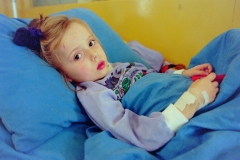
Aleksander Nordahl was born in 1971 and studied at the Norwegian Institute of Journalism. He was a staff photographer at the Norwegian news agency NTB from 1992 to 1997, when he joined the staff of Dagbladet newspaper. Nordahl is currently working on Dagbladet’s Saturday magazine, producing national and international documentary stories as well as portraits and features.
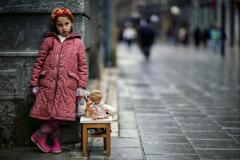
A philanthropist, idealist, humanist, Reza’s career began with studies in architecture. He has gone on to become a renowned photojournalist who, for the last three decades, has worked all over the world, notably for National Geographic. His assignments have taken him to over a hundred countries as a witness to humanity’s conflicts and catastrophes. His work is featured in the international media (National Geographic, Time Magazine, Stern, Newsweek, El País, Paris Match, Geo…), as well as a series of books, exhibitions and documentaries.
Along with his work as a photographer, since 1983 Reza has been a volunteer committed to the training of youths and women from conflict-ridden societies in the language of images, to help them strive for a better world. In 2001, he founded Ainaworld in Afghanistan, a new generation NGO which trains populations in information and communications through the development of educational tools and adapted media. While pursuing his reportages for international media outlets, Reza has continued to conduct workshops on the language of images through his association Reza Visual Academy. He works with refugees, urban youths in Europe and different megacities in the world.
After his work, Memories of Exile shown at the Louvre Carrousel in 1998, he has shared his humanitarian vision through a series of monumental installations among them: Crossing Destinies, shown on the fences of the Luxembourg Gardens in Paris, One World, One Tribe in Washington DC, War + Peace at the Caen Memorial, Hope in Doha (Qatar), Windows of the Soul in Corsica, Soul of Coffee, 250 photographic exhibitions throughout the world, including major installations on the banks of the Seine, or at Kew Gardens in London, Land of Tolerance at the UN Headquarters in New York, the European Parliament in Brussels, as well as UNESCO in Paris, The Elegance of Fire,presented at the Petit Palais. Finally, the giant panorama A Dream of Humanity was featured along the banks of the Seine during the summer of 2015, showing portraits of refugees around the world taken by Reza and photographs taken by refugee children in Iraqi Kurdistan who were trained as “camp reporters” at the workshops organized by Reza Visual Academy.
Author of thirty books, and a recipient of many awards over the course of his career, Reza is a Fellow (2006-2012) and Explorer of the National Geographic Society since 2013, and a Senior Fellow of the Ashoka Foundation. His work has been recognized by World Press Photo; he has also received the Infinity Award from the International Center of Photography, the Lucy Award, an honorary medal from the University of Missouri and the honorary degree of Doctor Honoris Causa from the American University of Paris. France has also appointed him a Chevalier of the National Order of Merit. http://reza.photo
Along with his work as a photographer, since 1983 Reza has been a volunteer committed to the training of youths and women from conflict-ridden societies in the language of images, to help them strive for a better world. In 2001, he founded Ainaworld in Afghanistan, a new generation NGO which trains populations in information and communications through the development of educational tools and adapted media. While pursuing his reportages for international media outlets, Reza has continued to conduct workshops on the language of images through his association Reza Visual Academy. He works with refugees, urban youths in Europe and different megacities in the world.
After his work, Memories of Exile shown at the Louvre Carrousel in 1998, he has shared his humanitarian vision through a series of monumental installations among them: Crossing Destinies, shown on the fences of the Luxembourg Gardens in Paris, One World, One Tribe in Washington DC, War + Peace at the Caen Memorial, Hope in Doha (Qatar), Windows of the Soul in Corsica, Soul of Coffee, 250 photographic exhibitions throughout the world, including major installations on the banks of the Seine, or at Kew Gardens in London, Land of Tolerance at the UN Headquarters in New York, the European Parliament in Brussels, as well as UNESCO in Paris, The Elegance of Fire,presented at the Petit Palais. Finally, the giant panorama A Dream of Humanity was featured along the banks of the Seine during the summer of 2015, showing portraits of refugees around the world taken by Reza and photographs taken by refugee children in Iraqi Kurdistan who were trained as “camp reporters” at the workshops organized by Reza Visual Academy.
Author of thirty books, and a recipient of many awards over the course of his career, Reza is a Fellow (2006-2012) and Explorer of the National Geographic Society since 2013, and a Senior Fellow of the Ashoka Foundation. His work has been recognized by World Press Photo; he has also received the Infinity Award from the International Center of Photography, the Lucy Award, an honorary medal from the University of Missouri and the honorary degree of Doctor Honoris Causa from the American University of Paris. France has also appointed him a Chevalier of the National Order of Merit. http://reza.photo
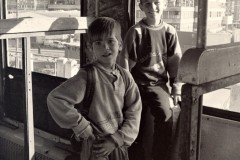
Gilbert Le Vast is an artist and a professional photographer who seeks to create all kinds of techniques such as collage, highlighting shadows and lights which are particular and powerful in his works.
He started photography in 1970. He worked for the La Manche Libre newspaper, the Zaï photo agency and the Gamma agency, which led him to follow the siege of Sarajevo. It was in 1993 that he opened his eyes to other visual techniques. He was introduced to painting, spontaneously and passionately. Painting becomes his priority and his main activity.
Gilbert Le Vast lives and works in Vallauris in the south of France. He holds a photography CAP obtained in Avranches in France. He exhibited regularly at the Signature gallery in Cannes and at the Endrix gallery in Saint Paul de Vence. His work was awarded in 2000 at the Cannes Art Festival in the surrealism category. https://www.artmajeur.com/evastgil/en
He started photography in 1970. He worked for the La Manche Libre newspaper, the Zaï photo agency and the Gamma agency, which led him to follow the siege of Sarajevo. It was in 1993 that he opened his eyes to other visual techniques. He was introduced to painting, spontaneously and passionately. Painting becomes his priority and his main activity.
Gilbert Le Vast lives and works in Vallauris in the south of France. He holds a photography CAP obtained in Avranches in France. He exhibited regularly at the Signature gallery in Cannes and at the Endrix gallery in Saint Paul de Vence. His work was awarded in 2000 at the Cannes Art Festival in the surrealism category. https://www.artmajeur.com/evastgil/en
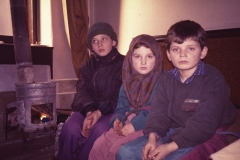
Jim Bartlett was one of many unaffiliated freelancers who worked in Croatia and Bosnia during the war, and afterward.
"I was a good photographer, but realistically had little or no idea of how to be a photojournalist. I was fortunate enough to find many good mentors, and a lot of support from the people of Croatia and Bosnia. They get a lions share of the credit for this body of work. Looking back through these images, it's staggers the mind to see just how young most of us were."
Jim recently compiled a photo memoir of his time there, titled, "Kill Thy Neighbor: Bosnia 1992-98. A photo memoir." It is available on Amazon. Highly recommended.
"I was a good photographer, but realistically had little or no idea of how to be a photojournalist. I was fortunate enough to find many good mentors, and a lot of support from the people of Croatia and Bosnia. They get a lions share of the credit for this body of work. Looking back through these images, it's staggers the mind to see just how young most of us were."
Jim recently compiled a photo memoir of his time there, titled, "Kill Thy Neighbor: Bosnia 1992-98. A photo memoir." It is available on Amazon. Highly recommended.
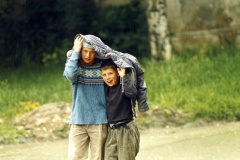
Beginning his career over 25 years ago with a short-lived but instructional foray into magazine publication, Justin's creative eye and intrepid spirit have since taken him on a successful, diverse and at times personally challenging journey through the world of photography and filmmaking.
His early career saw him commissioned by some of the world’s most prestigious publications to cover the extremes of the Balkan conflict, the first Gulf War, the Good Friday Agreement and the fall of communism in Eastern Europe. His extraordinary work marked him out and he joined Network Photographers, a prestigious collective of some of the best photojournalists of the 20th century. In 1997 he won Nikon's Press Photographer of the Year.
In recent years Justin has brought a different focus to his work. With his love of photography, storytelling and cars, and a desire to undertake some fresh challenges he turned his eye on the world of the automobile, whilst also continuing to capture compelling moments, people and environments in the world around him.
Justin has filmed and photographed some of the world's rarest and most beautiful cars in breathtaking locations across the globe. He has also shot some of the most iconic personalities of our time including Bill Clinton, Hunter S Thompson, Leonard Bernstein, Spike Lee, Wes Anderson, Ron Jeremy, Jeremy Irons, Tom Cruise, Cameron Diaz, Lewis Hamilton, Michael Schumacher and Sterling Moss.
Clients include:
Commercial: Audi, BBC, Bentley, BMW, BP, Crisis, The Economist, Ford, KTM, Hyundai, Infiniti, Lloyds TSB, Maserati, Mercedes, NHS, Nissan, Rolls Royce, SABMiller, Seat, Shell, Skoda, Toyota.
Editorial: Automobile, Car, Conde Nast Traveller, Daily, Evo, Ferrari Magazine, FT Magazine, Intersection, Newsweek, NME, Octane, Ramp, Sunday Telegraph, Sunday Times Magazine, Times Magazine, Time Magazine, Top Gear.
Cafe Royal Books have also recently published 2 bodies of his documentary images from Silesia and the Fall of the Berlin Wall entitled ‘Babórka, 1993’ and ‘Berlin 09.11.1989’. www.justinleighton.com
His early career saw him commissioned by some of the world’s most prestigious publications to cover the extremes of the Balkan conflict, the first Gulf War, the Good Friday Agreement and the fall of communism in Eastern Europe. His extraordinary work marked him out and he joined Network Photographers, a prestigious collective of some of the best photojournalists of the 20th century. In 1997 he won Nikon's Press Photographer of the Year.
In recent years Justin has brought a different focus to his work. With his love of photography, storytelling and cars, and a desire to undertake some fresh challenges he turned his eye on the world of the automobile, whilst also continuing to capture compelling moments, people and environments in the world around him.
Justin has filmed and photographed some of the world's rarest and most beautiful cars in breathtaking locations across the globe. He has also shot some of the most iconic personalities of our time including Bill Clinton, Hunter S Thompson, Leonard Bernstein, Spike Lee, Wes Anderson, Ron Jeremy, Jeremy Irons, Tom Cruise, Cameron Diaz, Lewis Hamilton, Michael Schumacher and Sterling Moss.
Clients include:
Commercial: Audi, BBC, Bentley, BMW, BP, Crisis, The Economist, Ford, KTM, Hyundai, Infiniti, Lloyds TSB, Maserati, Mercedes, NHS, Nissan, Rolls Royce, SABMiller, Seat, Shell, Skoda, Toyota.
Editorial: Automobile, Car, Conde Nast Traveller, Daily, Evo, Ferrari Magazine, FT Magazine, Intersection, Newsweek, NME, Octane, Ramp, Sunday Telegraph, Sunday Times Magazine, Times Magazine, Time Magazine, Top Gear.
Cafe Royal Books have also recently published 2 bodies of his documentary images from Silesia and the Fall of the Berlin Wall entitled ‘Babórka, 1993’ and ‘Berlin 09.11.1989’. www.justinleighton.com
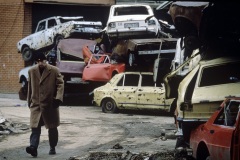
Born on 23 August 1962 in Croatia, at the time of his birth still a part of former Yugoslavia. Studied electrical engineering at University of Zagreb. Worked as a photographer at magazine "Start" in Zagreb until 1986 when he joined US based photo agency Picture Group and started regularly working on assignments for Time, Newsweek, Der Spiegel, Stern and NY Times. In 1989 he became a co-founding photographer of Saba Press Photos agency. Among other stories he covered the collapse of Iron Curtain, exodus of Iraqi Kurds in Turkey, devastating earthquake in Turkey, the breakup of Yugoslavia, the invasion of Afghanistan. His images appeared on the front pages of Time, Newsweek, US News, L'Express and Le Nouvel Observateur. Today Filip is now retired from photography, he owns and runs a small hotel on the Adriatic island of Prvic.
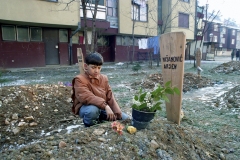
Photographer Tony Ashby's career spans five decades and has won him numerous awards.
He won the prestigious Walkley Award twice, and was twice a finalist. He is credited with a long list of other awards from important press photographer exhibitions and has been honoured for being a finalist for the most valued contribution to journalism at the Walkley's.
With his vast international and domestic experience his lens has captured the full spectrum of human life, with its inevitable ups and downs, victories and defeats, and many quandaries. Some of his best work has been in troubled, often dangerous parts of the world. During 32 years with The West Australian newspaper, plus time working freelance since he travelled to countries afflicted by civil war, floods, genocide, terrorism and more.
Lebanon's internal war raged for 15 years and he was there on 10 occasions, during a period when members of the western media were abducted and being held hostage. His images told a powerful story of survival on many fronts including Iraq, Jordan and Israel.
He later tackled the 1990s Balkan wars, spending time in Croatia, where 26 of his colleagues were killed during the first six months; the dreadful siege of Sarajevo and conflict throughout in the surrounding Bosnian countryside. He returned nine times to the region which won him one of his coveted Walkleys.
There was also the Intifada in the Occupied Territories of Gaza and The West Bank, the troubles in Northern Ireland, civil war in Mozambique, genocide in Rwanda, kidnapping in Sudan, civil war and ethnic cleansing in Kosovo, Sri Lanka’s Tamil Tigers, Afghanistan and Kabul under siege by the Taliban, Cambodia and the Khmer Rouge, turbulence in Indonesia during and after the fall of President Suharto, and the fight for independence in East Timor. The tragedy of the Chernobyl nuclear disaster and the floods that wreaked havoc in Bangladesh were also covered by his lens.
However, his focus has gone wider than violence and destruction. He has gathered many beautiful images of wildlife and of the daily efforts of people bravely making the most of miserable situations, often with a bright smile. He re-visited some of these places a number of times, drawing inspiration each time. On other occasions, he has visited less-violent, even peaceful countries, simply because their cultures had intrigued him. http://tonyashbyphotography.com
He won the prestigious Walkley Award twice, and was twice a finalist. He is credited with a long list of other awards from important press photographer exhibitions and has been honoured for being a finalist for the most valued contribution to journalism at the Walkley's.
With his vast international and domestic experience his lens has captured the full spectrum of human life, with its inevitable ups and downs, victories and defeats, and many quandaries. Some of his best work has been in troubled, often dangerous parts of the world. During 32 years with The West Australian newspaper, plus time working freelance since he travelled to countries afflicted by civil war, floods, genocide, terrorism and more.
Lebanon's internal war raged for 15 years and he was there on 10 occasions, during a period when members of the western media were abducted and being held hostage. His images told a powerful story of survival on many fronts including Iraq, Jordan and Israel.
He later tackled the 1990s Balkan wars, spending time in Croatia, where 26 of his colleagues were killed during the first six months; the dreadful siege of Sarajevo and conflict throughout in the surrounding Bosnian countryside. He returned nine times to the region which won him one of his coveted Walkleys.
There was also the Intifada in the Occupied Territories of Gaza and The West Bank, the troubles in Northern Ireland, civil war in Mozambique, genocide in Rwanda, kidnapping in Sudan, civil war and ethnic cleansing in Kosovo, Sri Lanka’s Tamil Tigers, Afghanistan and Kabul under siege by the Taliban, Cambodia and the Khmer Rouge, turbulence in Indonesia during and after the fall of President Suharto, and the fight for independence in East Timor. The tragedy of the Chernobyl nuclear disaster and the floods that wreaked havoc in Bangladesh were also covered by his lens.
However, his focus has gone wider than violence and destruction. He has gathered many beautiful images of wildlife and of the daily efforts of people bravely making the most of miserable situations, often with a bright smile. He re-visited some of these places a number of times, drawing inspiration each time. On other occasions, he has visited less-violent, even peaceful countries, simply because their cultures had intrigued him. http://tonyashbyphotography.com
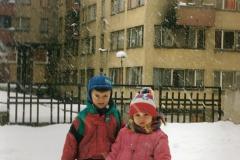
William Ney did local journalism in New York from 1987 into the early 90s. In 1987 he also began to travel and write about Berlin, East Germany and Czechoslovakia. He first came to dissolving Yugoslavia in 1993 as a print journalist, but of course brought a camera. He has written eleven long fictions and innumerable, mostly forgotten shorts.
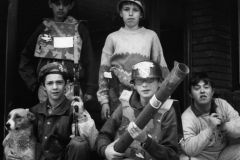
Andrej Đerković rođen je 1971.godine u Sarajevu, gdje je završio Školu Primijenjenih umjetnosti. Član je Udruženja Likovnih umjetnika primjenjene umjetnosti Bosne i Hercegovine (ULUPUBIH) od 2002. Samostalno izlagao u Sjevernoj Irskoj, Danskoj, Crnoj Gori, Kanadi, Švicarskoj, Italiji, Španjolskoj, Nizozemskoj, Srbiji, Francuskoj, Hrvatskoj, Engleskoj, Makedoniji, Turskoj, Palestini, San Marinu, Sloveniji, Njemačkoj, Bosni i Hercegovini, Grčkoj, Urugvaju, Australiji, Belgiji, Alžiru, Gruziji, Kneževini Lihtenštajn, Portugalu, Libanonu, Albaniji, Švedskoj, Vatikanu, Meksiku, Brazilu i na Novom Zelandu i Kubi.
Jedan je od osnivača Kolekcije ARS AEVI Muzeja Suvremene umjetnosti Sarajevo. Radovi mu se nalaze u kolekcijama Fototeca de Cuba La Habana, MACBA Barcelona, Museum für Kunst und Gewerbe Hamburg, Nacionalni Muzej Gruzije Tbilisi, Umjetnička Galerija Bosne i Hercegovine, Museo sperimentale di arte contemporanea MU.SP.AC. Aquila, Council of Europe Strasbourg, Old Arts Museum Belfast, Jewish Historical Museum Amsterdam, Olimpijski muzej Sarajevo, Muzej Jugoslavije Beograd, SCCA Centar za Suvremenu umjetnost Sarajevo, Muzej nevinosti Istanbul, Historijski Muzej Bosne i Hercegovine, Narodni Muzej Crne Gore Cetinje, Photon Centar za Suvremenu fotografiju Ljubljana, Memorijalni Centar Srebrenica i drugi.
Uradio je fotografske portrete Jeff Koons, Marina Abramović, David LaChapelle, Michelangelo Pistoletto, Emmanuelle Beart, David Byrne, Jean-Luc Godard, Isabelle Huppert, Bono Vox, Michel Hazanavicius, Sinéad O'Connor, Braco Dimitrijević, Catherine Deneuve, Jean-Hugues Anglade, Richard Galliano, Alfonso Cuarón, Rachid Taha, Sebastião Salgado, Yann Arthus-Bertrand, agnès b., MC Solaar, Vincent Perez, Christine and the Queens, Aslı Erdoğan, Costa-Gavras i drugi.
U povodu 100 godina Švicarske Asocijacije Fotografske umjetnosti uvršten je u monografiju „PHOTO SUISSE 1906-2006“. Uvršten je u “Leksikon Sarajeva”. Surađivao sa Benetton, agnès b. i Swatch. Za dostignuća na polju kulture tokom opsade Sarajeva, nagrađen sa ̋The Certificate of Appreciation ̋ Agencije Američke Vlade za informisanje (USIA). Živi u Ženevi.
Jedan je od osnivača Kolekcije ARS AEVI Muzeja Suvremene umjetnosti Sarajevo. Radovi mu se nalaze u kolekcijama Fototeca de Cuba La Habana, MACBA Barcelona, Museum für Kunst und Gewerbe Hamburg, Nacionalni Muzej Gruzije Tbilisi, Umjetnička Galerija Bosne i Hercegovine, Museo sperimentale di arte contemporanea MU.SP.AC. Aquila, Council of Europe Strasbourg, Old Arts Museum Belfast, Jewish Historical Museum Amsterdam, Olimpijski muzej Sarajevo, Muzej Jugoslavije Beograd, SCCA Centar za Suvremenu umjetnost Sarajevo, Muzej nevinosti Istanbul, Historijski Muzej Bosne i Hercegovine, Narodni Muzej Crne Gore Cetinje, Photon Centar za Suvremenu fotografiju Ljubljana, Memorijalni Centar Srebrenica i drugi.
Uradio je fotografske portrete Jeff Koons, Marina Abramović, David LaChapelle, Michelangelo Pistoletto, Emmanuelle Beart, David Byrne, Jean-Luc Godard, Isabelle Huppert, Bono Vox, Michel Hazanavicius, Sinéad O'Connor, Braco Dimitrijević, Catherine Deneuve, Jean-Hugues Anglade, Richard Galliano, Alfonso Cuarón, Rachid Taha, Sebastião Salgado, Yann Arthus-Bertrand, agnès b., MC Solaar, Vincent Perez, Christine and the Queens, Aslı Erdoğan, Costa-Gavras i drugi.
U povodu 100 godina Švicarske Asocijacije Fotografske umjetnosti uvršten je u monografiju „PHOTO SUISSE 1906-2006“. Uvršten je u “Leksikon Sarajeva”. Surađivao sa Benetton, agnès b. i Swatch. Za dostignuća na polju kulture tokom opsade Sarajeva, nagrađen sa ̋The Certificate of Appreciation ̋ Agencije Američke Vlade za informisanje (USIA). Živi u Ženevi.
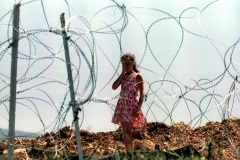
Piotr (Peter) Andrews was born in Kano, Nigeria in 1961. Moved to Poland at the age of six. In 1981 he defected to the United Kingdom and then to Canada where he studied photography for two years at the University of Ottawa. After working for a number of national newspapers in Canada. Piotr returned to Europe where he worked for Associated Press until joining Reuters in Moscow in 1991. Four years later he was assigned to South Africa and then to Sarajevo, where together with the late Kurt Schork, he was nominated for Reuters for the Pulitzer Prize for his coverage of the 'last massacre' in Sarajevo that took place on the 28th of August 1995.
Piotr returned to Johannesburg in 1996 to become Chief Photographer Southern Africa and upon moving to Nairobi in 1999, he was promoted to a position of Chief Photographer Eastern and Southern Africa. In 2000 he returned to Warsaw where he became Reuters Chief Photographer Poland and kept this roving position till 2013.
His roving assignments for Reuters included covering conflicts in Africa, Israel, Iraq, Afghanistan, Chechnya, Haiti, former Yugoslavia and former Soviet Republics. In addition to reporting in hostile environments Piotr also covered the soccer World Cup finals in Japan and Germany, the summer and winter Olympic games in Salt Lake City, Athens, Torino and Beijing as well as The Americas Cup in Valencia and San Francisco and other sports events.
At the beginning of 2014 Piotr became an independent freelance photographer.
Sean Maguire, (former Chief Reuters Correspondent Europe) Peter looks with a cold eye, and by using his sensitivity and professionalism can translate it in to an image. He is a first league photographer. You can sent him anywhere in the world and you can be sure that he will bring a very good material.
General Slawomir Petelicki, founder of Poland's Elite Special Forces GROM. We met in Haiti in 1994. Place called a Hell Hole. We became friends and he never abused this friendship. None of the pictures of soldiers of the elite special forces have ever been published with out our knowledge. https://www.piotrandrewsphotography.com
Piotr returned to Johannesburg in 1996 to become Chief Photographer Southern Africa and upon moving to Nairobi in 1999, he was promoted to a position of Chief Photographer Eastern and Southern Africa. In 2000 he returned to Warsaw where he became Reuters Chief Photographer Poland and kept this roving position till 2013.
His roving assignments for Reuters included covering conflicts in Africa, Israel, Iraq, Afghanistan, Chechnya, Haiti, former Yugoslavia and former Soviet Republics. In addition to reporting in hostile environments Piotr also covered the soccer World Cup finals in Japan and Germany, the summer and winter Olympic games in Salt Lake City, Athens, Torino and Beijing as well as The Americas Cup in Valencia and San Francisco and other sports events.
At the beginning of 2014 Piotr became an independent freelance photographer.
Sean Maguire, (former Chief Reuters Correspondent Europe) Peter looks with a cold eye, and by using his sensitivity and professionalism can translate it in to an image. He is a first league photographer. You can sent him anywhere in the world and you can be sure that he will bring a very good material.
General Slawomir Petelicki, founder of Poland's Elite Special Forces GROM. We met in Haiti in 1994. Place called a Hell Hole. We became friends and he never abused this friendship. None of the pictures of soldiers of the elite special forces have ever been published with out our knowledge. https://www.piotrandrewsphotography.com
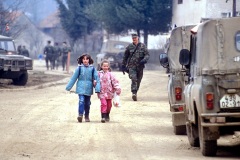
GREG LOCKE has more than twenty-five years experience as a professional photographer, journalist, editor and media producer. His work has appeared in publications and news agencies such as Canadian Geographic, Reuters, The Globe & Mail, Forbes, Time, Businessweek, Readers Digest, Toronto Star, Canadian Business, Financial Post Magazine, Utne Reader, Men’s Health, Macleans and der Spiegel as well as his commercial work for corporate clients that include Chevron, Statoil, RollsRoyce, Mobil Oil, Texas instruments, Ford of Canada, Bank of Montreal, Canadian Bar Association, Petro Canada, Medecins sans Frontieres, Newfoundland & Labrador Hydro, Parks Canada, Kodak Europe and the Canadian Broadcasting Corp.
His assignments have taken him from the ice floes and offshore oil fields of the North Atlantic to the civil wars of The Balkans and the conflicts in Central Africa. Locke is equally comfortable working in the corporate boardroom as he is remote field locations or out on the lonely northern highways of Canada.
His is the producer and director for Stray Light Media, Inc. an integrated media production company in St. John’s, Newfoundland.
www.straylight.ca
His assignments have taken him from the ice floes and offshore oil fields of the North Atlantic to the civil wars of The Balkans and the conflicts in Central Africa. Locke is equally comfortable working in the corporate boardroom as he is remote field locations or out on the lonely northern highways of Canada.
His is the producer and director for Stray Light Media, Inc. an integrated media production company in St. John’s, Newfoundland.
www.straylight.ca
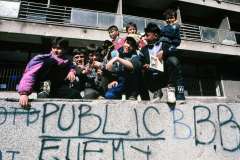
Fernando Costa Netto is a journalist, photographer, entrepreneur and owner partner of DOC Galeria. He is the creator of Mostra SP de Fotografia, an event of occupation of Vila Madalena, São Paulo neighborhood, by photography. He is also one of the creators of Trip Magazine and other editorial projects such as the magazines VeniceMag (1993) and Boom (1994). In 2005, Fernando was the editor-in-chief of the Notícias Populares newspaper, part of Folha Media Group. Between 1997- 2000, he was a member of Polaroid SX70 photo collective. Some of his most important exhibitions and cultural activities are: “Fotocolecionismo”, Luisa Strina Gallery [1999]; “Imagens da Violência, Retrato da Exclusão”, MIS – Museu da Imagem e do Som [2000]; “Oscar Niemeyer, um Olhar sobre a Obra”, Paparazzi Gallery [2001]; SX70, Galeria Vermelho [2002]; “Dear Sarajevo”, a photo documentary during the war in Bosnia 1993-1994 and 10 years after, 2006 at Caixa Cultural. The exhibition opened the SP International Photography Month [2007]. Fernando was the curator of “Futebol Majestade” to celebrate the May Day with unpublished pictures of Pele, from the archives of Última Hora newspaper directed by Samuel Wainer. He also organized and curated the exhibition “Peladas”, with images of football played on the streets of 30 different countries by photographer Caio Vilela. He organized the exhibition “PIIOTOS WTC 1973-2011 SP/NY“ shown simultaneously in São Paulo, at Espaço SOMA and in New York at 1500 Gallery, as a remembrance of the 10 years of the attacks of September 11th in New York. As a journalist, editor and photographer, Fernando travelled through Peru, Mexico, Costa Rica, El Salvador, Guatemala, Tobago, Venezuela, USA, South Africa, Indonesia, India, Nepal, France, Spain, Bosnia, Israel, Palestine, Indonesia, among others. Fernando is a mentor of ASAS Institute, a Project of Redbull for young talents. http://www.docfoto.com.br https://www.instagram.com/fcostanetto/
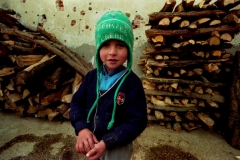
LIVIO SENIGALLIESI, born in Milano 1956.
Self-taught photographer, Senigalliesi begins the carrer at the end of the ‘70s taking pictures of social issues using the camera as a tool for social analysis.
In the lastest decades his passion for photography as testimony and the attention to historical events have taken him to many of the world hot spots: the Middle East and Kurdistan during the Gulf War, Berlin in the division and in the reunification times, Moscow during the days of the coup d'état which decreed the end of the Soviet Union, Sarajevo during the siege and all the phases of the conflict in the former Yugoslavia, Palestina, Iraq, Lebanon and Afghanistan.
He carried a long term project on the violations of human rights devoting much time to the genocides of the past and present and living long periods in conflict zones in Africa, Southeast Asia and Latin America.
He works for the UNHCR (United Nations High Commission for Refugees) Photo-Desk, for the Italian Cooperation for several Italian and foreign NGOs, documenting the consequenses of the war, the suffering of the civilians and the projects of reconstruction.
Author of many books and photo-exhibitions, Senigalliesi published his reportage on the main national and foreign newspapers as Corriere della Sera, Repubblica, L'Europeo, L'Espresso, Epoca, Panorama, Il Manifesto, La Vanguardia, El Pais, Liberation, Le Monde, Der Spiegel, Die Welt, Berliner Morgenpost, Stern, Frankfurter Allgemeine, The Guardian, The Indipendent, The European, Time Magazine, National Geographic Magazine.
In the last 10 years he has documented migrant routes in the Mediterranean and the condition of refugees in Italy and along the Balkan Route.
In 2016 he realized a long and complex report from the island of Lesbos (Greece) to the border between Slovenia and Italy. Dozens of interviews and long detailed text create the heart of a book entitled "Rotta balcanica". His commitment includes educational projects for schools and universities where bears his testimony and awareness of young people in international issues and forced migration.
www.liviosenigalliesi.com
Self-taught photographer, Senigalliesi begins the carrer at the end of the ‘70s taking pictures of social issues using the camera as a tool for social analysis.
In the lastest decades his passion for photography as testimony and the attention to historical events have taken him to many of the world hot spots: the Middle East and Kurdistan during the Gulf War, Berlin in the division and in the reunification times, Moscow during the days of the coup d'état which decreed the end of the Soviet Union, Sarajevo during the siege and all the phases of the conflict in the former Yugoslavia, Palestina, Iraq, Lebanon and Afghanistan.
He carried a long term project on the violations of human rights devoting much time to the genocides of the past and present and living long periods in conflict zones in Africa, Southeast Asia and Latin America.
He works for the UNHCR (United Nations High Commission for Refugees) Photo-Desk, for the Italian Cooperation for several Italian and foreign NGOs, documenting the consequenses of the war, the suffering of the civilians and the projects of reconstruction.
Author of many books and photo-exhibitions, Senigalliesi published his reportage on the main national and foreign newspapers as Corriere della Sera, Repubblica, L'Europeo, L'Espresso, Epoca, Panorama, Il Manifesto, La Vanguardia, El Pais, Liberation, Le Monde, Der Spiegel, Die Welt, Berliner Morgenpost, Stern, Frankfurter Allgemeine, The Guardian, The Indipendent, The European, Time Magazine, National Geographic Magazine.
In the last 10 years he has documented migrant routes in the Mediterranean and the condition of refugees in Italy and along the Balkan Route.
In 2016 he realized a long and complex report from the island of Lesbos (Greece) to the border between Slovenia and Italy. Dozens of interviews and long detailed text create the heart of a book entitled "Rotta balcanica". His commitment includes educational projects for schools and universities where bears his testimony and awareness of young people in international issues and forced migration.
www.liviosenigalliesi.com
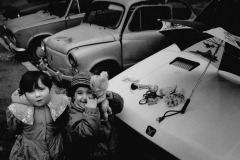
Photojournalist Vesa Oja was born in Lahti, Finland in 1953. He studied photography at the Lahti Institute of Industrial Arts in Finland 1973-1976. Since 1978, he worked as Staff Photographer for the leading Finnish national newspaper Helsingin Sanomat, of which he was retired in 2012. In 2013 he completed his long project Finglish – Photographs of Finns in North America, which consists photos and interviews of Finnish Americans and Finnish Canadians. His previous photo book Toinen Eurooppa - The Other Europe (published in 1999) deals with the disintegration of socialism in East Europe and the civil wars in the Balkans. https://www.finglish.fi
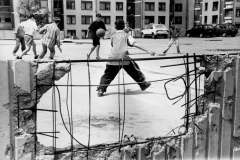
Max Reeves is a self-taught photographer whose work looks at issues of Myth, Marginality and Genius Loci and embraces a range of styles.
Born in Papakura, Aoteoroa/New Zealand in 1966 he studied English, History and Philosophy at Auckland University before moving to London in 1990. He lives in Spitalfields in the East End.
He is a photographer/member of the maverick humanitarian group The Serious Road Trip since 1994 and has travelled with them to Bosnia, Kosovo, Afghanistan, Palestine and elsewhere. He is one of the Bethlem Gallery artists and exhibits regularly at the Bethlem Gallery and in off-site shows and is a member of the Bethlem Arts advisory board.
He has exhibited widely in solo and group shows and has been in The John Kobal Photographic Portrait Award at the National Portrait Gallery in London.
He co-founded the Wetherspoons Underground Psychogeosofy Club in 2008 with Anthony Iles and Niall McDevitt.
In 1987 he founded Entropy Press which now publishes poetry and photography books and the zine Papakura Post Office. www.maxreeves.com and www.entropypress.co.uk
Born in Papakura, Aoteoroa/New Zealand in 1966 he studied English, History and Philosophy at Auckland University before moving to London in 1990. He lives in Spitalfields in the East End.
He is a photographer/member of the maverick humanitarian group The Serious Road Trip since 1994 and has travelled with them to Bosnia, Kosovo, Afghanistan, Palestine and elsewhere. He is one of the Bethlem Gallery artists and exhibits regularly at the Bethlem Gallery and in off-site shows and is a member of the Bethlem Arts advisory board.
He has exhibited widely in solo and group shows and has been in The John Kobal Photographic Portrait Award at the National Portrait Gallery in London.
He co-founded the Wetherspoons Underground Psychogeosofy Club in 2008 with Anthony Iles and Niall McDevitt.
In 1987 he founded Entropy Press which now publishes poetry and photography books and the zine Papakura Post Office. www.maxreeves.com and www.entropypress.co.uk
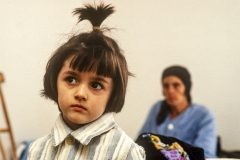
Mike Goldwater, born in 1951, is an award-winning documentary photojournalist and a founding member of the internationally acclaimed photo agency Network Photographers that ran from 1981 to 2005. He produced self-assigned and commissioned photo-stories for British and international magazines and over his career he has worked in more than 70 countries. He covered conflicts in Cambodia, El Salvador, Nicaragua, Guatemala, Eritrea, Ethiopia, Liberia, Georgia, Bosnia and Rwanda, winning two World Press awards and the Tom Hopkinson Prize for UK Magazine Photographer of the Year. See more of his work at www.mikegoldwater.com
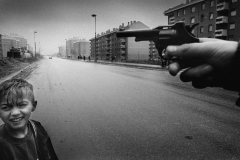
Born in 1963
After graduating from Jeonju University with a degree in Business Administration, Sung Namhun studied Documentary Photography at Icart Photo École de Paris and began working for Rapho, a photographic press agency in France. He has showcased his works at numerous exhibitions both at home and abroad, including the Grand Palais in Paris (1992), Guardian Garden in Tokyo (1994), Centre National de la Photographie in Paris (1996), Gallery Wa (2006), the Museum of Photography, Seoul (2008), Gallery Ryugaheon (2010), the Tashkent House of Photography (2010), the National Museum of Modern and Contemporary Art in Korea (2014), and Space22 (2016). His works have also garnered him prestigious awards such as the First Prize in Photography from "Le Salon" in Paris (1992), the Gangwon Grant for Documentary Production in Korea (2004), the Hanmi Photography Award and Dong Gang Photography Award in Korea (2006), the World Press Photo award (1999/2009), and the Ilwoo Photography Award in Korea (2017) Leica-oskar-barnack-award Finalist (2020) His works are displayed in galleries such as the National Museum of Modern and Contemporary Art in Korea, the Seoul Olympic Museum of Art(SOMA), Jeonbuk Museum of Art, Yesong Gallery, the Dong Gang Museum of Photography, the Tashkent House of Photography, the National Human Rights Commission of Korea, Gallery Wa, and Space22. Sung has also published his own books of photography with "Dreamy Field" (Idea), "Sorokdo" (Time Space), "The Unrooted" (Noonbit), "Capturing Dreams in Africa" (Korea Food for the Hungry International, KFHI), "Incomplete Straight Line" (Noonbit), and "Lotus Well" (Gallery Ryugaheon).
After graduating from Jeonju University with a degree in Business Administration, Sung Namhun studied Documentary Photography at Icart Photo École de Paris and began working for Rapho, a photographic press agency in France. He has showcased his works at numerous exhibitions both at home and abroad, including the Grand Palais in Paris (1992), Guardian Garden in Tokyo (1994), Centre National de la Photographie in Paris (1996), Gallery Wa (2006), the Museum of Photography, Seoul (2008), Gallery Ryugaheon (2010), the Tashkent House of Photography (2010), the National Museum of Modern and Contemporary Art in Korea (2014), and Space22 (2016). His works have also garnered him prestigious awards such as the First Prize in Photography from "Le Salon" in Paris (1992), the Gangwon Grant for Documentary Production in Korea (2004), the Hanmi Photography Award and Dong Gang Photography Award in Korea (2006), the World Press Photo award (1999/2009), and the Ilwoo Photography Award in Korea (2017) Leica-oskar-barnack-award Finalist (2020) His works are displayed in galleries such as the National Museum of Modern and Contemporary Art in Korea, the Seoul Olympic Museum of Art(SOMA), Jeonbuk Museum of Art, Yesong Gallery, the Dong Gang Museum of Photography, the Tashkent House of Photography, the National Human Rights Commission of Korea, Gallery Wa, and Space22. Sung has also published his own books of photography with "Dreamy Field" (Idea), "Sorokdo" (Time Space), "The Unrooted" (Noonbit), "Capturing Dreams in Africa" (Korea Food for the Hungry International, KFHI), "Incomplete Straight Line" (Noonbit), and "Lotus Well" (Gallery Ryugaheon).
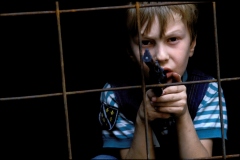
Based in Norfolk, Virginia, Richards works in nonfiction, fiction and commercial film production, photojournalism/documentary photography and multimedia production for magazine, newspaper, commercial, TV and motion picture clients.
His work has ranged from coverage of the White House in Washington, DC to conflict zones around the world, including the disintegration of Yugoslavia (particularly the wars in Croatia and Bosnia and the 44 month siege of Sarajevo), the civil wars in Nicaragua, El Salvador, the US invasion of Panama, the guerrilla and narco-conflict in Colombia, political and social issues in Haiti and Peru, and the search for peace between the Israelis and the Palestinians. https://www.rogermrichards.com/
His work has ranged from coverage of the White House in Washington, DC to conflict zones around the world, including the disintegration of Yugoslavia (particularly the wars in Croatia and Bosnia and the 44 month siege of Sarajevo), the civil wars in Nicaragua, El Salvador, the US invasion of Panama, the guerrilla and narco-conflict in Colombia, political and social issues in Haiti and Peru, and the search for peace between the Israelis and the Palestinians. https://www.rogermrichards.com/
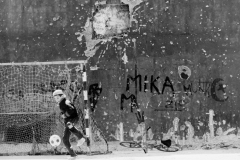
"I worked as a freelance editorial photographer in Edinburgh in Scotland in the 90s and 2000s.
I specialised in music, performance and educational photographic subjects and magazines, like the Edinburgh International Festival or the Times Educational Supplement newspaper.
On a job for the University of Edinburgh I met and photographed Prof Nigel Osborne, who regularly travelled to Bosnia to support educational projects and the cultural life of the country.
I asked to come on one of his trips, and to my surprise and horror, he agreed.
I was no war photographer.
I made about half a dozen trips to Sarajevo and Mostar during 94, 95, and 96, photographing music therapy and art therapy projects and performances in the Sarajevo Winter Festival; I worked with organisations like Edinburgh University’s Music and Community projects, WarChild and Serious Road Trip, and found myself travelling with musicians like Brian Eno and Eugene Skeef. Sometimes I organised photographic projects with children and teenagers.
It was a humbling but great privilege to briefly experience the hospitality of the people, especially the young teenagers, of Sarajevo and Mostar. I learned a lot.
I think of it often, and I have developed a serious coffee habit to this day.” https://www.flickr.com/photos/186067726@N02/albums
I specialised in music, performance and educational photographic subjects and magazines, like the Edinburgh International Festival or the Times Educational Supplement newspaper.
On a job for the University of Edinburgh I met and photographed Prof Nigel Osborne, who regularly travelled to Bosnia to support educational projects and the cultural life of the country.
I asked to come on one of his trips, and to my surprise and horror, he agreed.
I was no war photographer.
I made about half a dozen trips to Sarajevo and Mostar during 94, 95, and 96, photographing music therapy and art therapy projects and performances in the Sarajevo Winter Festival; I worked with organisations like Edinburgh University’s Music and Community projects, WarChild and Serious Road Trip, and found myself travelling with musicians like Brian Eno and Eugene Skeef. Sometimes I organised photographic projects with children and teenagers.
It was a humbling but great privilege to briefly experience the hospitality of the people, especially the young teenagers, of Sarajevo and Mostar. I learned a lot.
I think of it often, and I have developed a serious coffee habit to this day.” https://www.flickr.com/photos/186067726@N02/albums
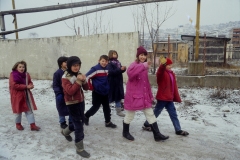
After almost 20 years of analogic photography, shooting pictures distributed by international press agencies - Imapress, Cinestar, AFP, Reuters, and published in different magazines and newspapers, and more or less 20 others of digital cameras use, working successively for Demotix, Corbis, Getty Image and Citizenside, I’ve got my independence back, sharing my time between the production of press subjects before assigning their exclusive distribution to Alamy News and Stock Photos agency.
At 63, I want to get rid of any obligation, sharing my time between the production of pictures and subjects I’m insterested in and a more experimental practice of photography, coming back to what I feel like the origines of the photography - from ancien greek : write with the light - and using negative films in toy and vintage analogic cameras, considering the pleasure of being totally responsible of my pictures, despite any so called imperfections due to low quality plastic lenses and disused camera bodies.
It was with this in mind that I recently re-established a photo-lab, next to my home, sharing the pleasure of making B&W photographic prints in the company of my son, himself a documentary films & clips maker, and starting photographer.
I hope you will enjoy your visit to my website and invite any person interested by my archive works to get in touch with my exclusive distributor, Alamy or visit my collection at https://www.alamy.com/portfolio/114162.html . For any else question or proposal, you can also get in touch with me through the contact form available as part of this website.
NO FACEBOOK, NO TWITTER, NOR INSTAGRAM ACCOUNT, IT’S A POLITICAL AND ETHICAL CHOICE. https://www.sergemouraretphotographer.com
At 63, I want to get rid of any obligation, sharing my time between the production of pictures and subjects I’m insterested in and a more experimental practice of photography, coming back to what I feel like the origines of the photography - from ancien greek : write with the light - and using negative films in toy and vintage analogic cameras, considering the pleasure of being totally responsible of my pictures, despite any so called imperfections due to low quality plastic lenses and disused camera bodies.
It was with this in mind that I recently re-established a photo-lab, next to my home, sharing the pleasure of making B&W photographic prints in the company of my son, himself a documentary films & clips maker, and starting photographer.
I hope you will enjoy your visit to my website and invite any person interested by my archive works to get in touch with my exclusive distributor, Alamy or visit my collection at https://www.alamy.com/portfolio/114162.html . For any else question or proposal, you can also get in touch with me through the contact form available as part of this website.
NO FACEBOOK, NO TWITTER, NOR INSTAGRAM ACCOUNT, IT’S A POLITICAL AND ETHICAL CHOICE. https://www.sergemouraretphotographer.com
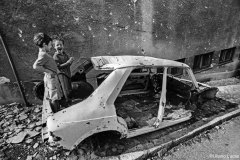
Uliano Lucas was born in Milan in 1942 from a labour family. He grew up during the civil and intellectual reconstruction that characterized Lombardy during the post-world war. He carried out his studies in renaissance boarding schools where teachers such as Luciano Raimondi, Albe Steiner or Guido Petter supported partisan children offering them the possibility to study.
17 year old Uliano was expelled from school as he was too undisciplined: curious and restless when he started to mix with artists, photographers, and journalists who all lived within the area of Brera. During his endless discussions with graphic designers, intellectuals and artisans of the old Milan-at Genis or Giamaica bars- as well as talking to the photographers Ugo Mulas, Mario Dondero and Alfa Castaldi, he decided to attempt photo-journalism. At this point, Uliano saw in photo-journalism a mean of civil commitment as well as an independent profession, free from constraint, the encouragement to discover different worlds later characterizing his whole existence.
During the beginning of his career he depicts working-class moments of his town, i.e. the life and presence of his fellow writers and painters – Enrico Castellani, Costantino Guenzi, Piero Manzoni and Arturo Vermi. He also draws a picture of musical and theatrical excitement: going from Tinin Mantegazza’s “Cab ’64” to rock groups such as Stormy Six and Ribelli. more here > http://www.ulianolucas.it/
17 year old Uliano was expelled from school as he was too undisciplined: curious and restless when he started to mix with artists, photographers, and journalists who all lived within the area of Brera. During his endless discussions with graphic designers, intellectuals and artisans of the old Milan-at Genis or Giamaica bars- as well as talking to the photographers Ugo Mulas, Mario Dondero and Alfa Castaldi, he decided to attempt photo-journalism. At this point, Uliano saw in photo-journalism a mean of civil commitment as well as an independent profession, free from constraint, the encouragement to discover different worlds later characterizing his whole existence.
During the beginning of his career he depicts working-class moments of his town, i.e. the life and presence of his fellow writers and painters – Enrico Castellani, Costantino Guenzi, Piero Manzoni and Arturo Vermi. He also draws a picture of musical and theatrical excitement: going from Tinin Mantegazza’s “Cab ’64” to rock groups such as Stormy Six and Ribelli. more here > http://www.ulianolucas.it/
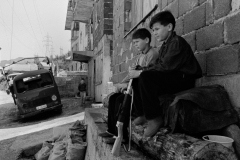
Born in Norway in 1963, Morten Hvaal is an award-winning international documentary photographer, who has covered conflicts and humanitarian crises globally. Clients include: The Associated Press, Time Magazine, Newsweek, USA Today, Der Spiegel, Stern, Paris Match, Economist, BBC, CNN, and most major newspapers. His work in Bosnia can be seen in the prestigious project, 'The Bosnia Book Project 1992-95', featuring 50 photographers who covered the war. https://www.100norwegianphotographers.no/morten-hvaal
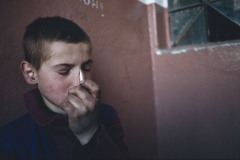
After studying photography at the professionnal college of Orthez, France, Jean-Claude Coutausse starts his carreer as a photojournalist for the photography department of the French army, the E.C.P.A., and covers his first conflict : the Israelian intervention in South Lebanon in June 1982. www.coutausse.com
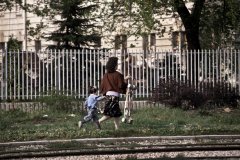
Jack Picone is the recipient of several of photography’s most prestigious international awards. These include the World Press Awards, the U.S. Photographer of The Year Awards (POY) and the Mother Jones/IFDP Grant for Social Documentary Photography.
Amongst others, his work has been exhibited at the Guggenheim Musem New York, Musée de l’Homme in Paris and Museum aan de Stroom: Amsterdam. His work is held in collections at The Australian War Memorial, State Library of N.S.W and National Portrait Gallery in Australia.
For the past three decades, Picone has covered wars and major social issues in Australia, Asia, Africa, and Europe. He is a co-founder of Australia’s REPORTAGE photography festival, the founder of Reportage Workshops (a series of documentary photography workshops in Asia) and a member of the war photographers collective SOUTH.
He completed a Masters degree in Visual Arts and a Ph.D. in Documentary Photography at Griffith University in Queensland Australia and is a Visiting Professor in photography at universities in Australia and Hong Kong.
Picone’s training in photography was in using black and white film and mastering traditional darkroom print-making. It is a passion that has never faded thanks to the medium’s unrivalled capacity for both subtlety and drama. As legendary photographer Robert Frank expressed it in 1951: “Black and white are the colours of photography. To me, they symbolise the alternatives of hope and despair to which mankind is forever subjected.” Born in Moree, Australia, Picone is currently based in Bangkok and works globally. https://www.jackpicone.com
Amongst others, his work has been exhibited at the Guggenheim Musem New York, Musée de l’Homme in Paris and Museum aan de Stroom: Amsterdam. His work is held in collections at The Australian War Memorial, State Library of N.S.W and National Portrait Gallery in Australia.
For the past three decades, Picone has covered wars and major social issues in Australia, Asia, Africa, and Europe. He is a co-founder of Australia’s REPORTAGE photography festival, the founder of Reportage Workshops (a series of documentary photography workshops in Asia) and a member of the war photographers collective SOUTH.
He completed a Masters degree in Visual Arts and a Ph.D. in Documentary Photography at Griffith University in Queensland Australia and is a Visiting Professor in photography at universities in Australia and Hong Kong.
Picone’s training in photography was in using black and white film and mastering traditional darkroom print-making. It is a passion that has never faded thanks to the medium’s unrivalled capacity for both subtlety and drama. As legendary photographer Robert Frank expressed it in 1951: “Black and white are the colours of photography. To me, they symbolise the alternatives of hope and despair to which mankind is forever subjected.” Born in Moree, Australia, Picone is currently based in Bangkok and works globally. https://www.jackpicone.com
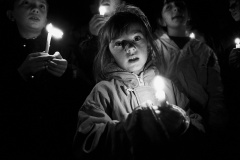
Paolo Siccardi, journalist and freelance photoreporter, he is the author of several books and photographic exhibitions.Since 2000 he has collaborated exclusively with the Italian magazine "Famiglia Cristiana" for all reportages.
He began his career in the 80s, at the end of the "Years of Lead", documenting the first trials in Turin for terrorism and workers' struggles. Among his most significant works was the conflict over Afghanistan, from the soviet occupation in 1986 to the ISAF mission in 2009.
In 1987 he followed the Sandinista revolution against the Contras guerrillas. He is in Jordan on january 17, 1991, the day of deadline the First Gulf War breaks out.
For ten years from 1989 to 1999, he documents the conflicts in the former Yugoslavia and the geo-political changes in the Balkan area. His reportages in the middle East, Iraq, Syria, the Golan Heights on the border with Israel, the West Bank and Gaza.
He is the winner of national journalist award in the photography category: "War reporters in 2002" promoted by the Antonio Russo Foundation and the Order Italian Journalists.
In 2018, her exhibition: "Exodos" was awarded the gold medal by the President of the Italian Republic Sergio Mattarella .
In Africa he realizes some reportages on conflicts and humanitarian emergencies in Senegal, Ivory Coast, Benin, Togo and several times in South Sudan. In 2012 he was in Syria during the siege of Aleppo. From 2015 to 2016 it follows the Ukrainian conflict of Donbass.
He is currently following the exodus of populations fleeing the wars to Europe.
His reportages, mainly of a social nature, have been published by the most important magazine and newspapers: Famiglia Cristiana, il Venerdì di Repubblica, Der Spiegel, Geo Japan, Time International, The Guardian and Courrier International. www.walkabout-ph.com
He began his career in the 80s, at the end of the "Years of Lead", documenting the first trials in Turin for terrorism and workers' struggles. Among his most significant works was the conflict over Afghanistan, from the soviet occupation in 1986 to the ISAF mission in 2009.
In 1987 he followed the Sandinista revolution against the Contras guerrillas. He is in Jordan on january 17, 1991, the day of deadline the First Gulf War breaks out.
For ten years from 1989 to 1999, he documents the conflicts in the former Yugoslavia and the geo-political changes in the Balkan area. His reportages in the middle East, Iraq, Syria, the Golan Heights on the border with Israel, the West Bank and Gaza.
He is the winner of national journalist award in the photography category: "War reporters in 2002" promoted by the Antonio Russo Foundation and the Order Italian Journalists.
In 2018, her exhibition: "Exodos" was awarded the gold medal by the President of the Italian Republic Sergio Mattarella .
In Africa he realizes some reportages on conflicts and humanitarian emergencies in Senegal, Ivory Coast, Benin, Togo and several times in South Sudan. In 2012 he was in Syria during the siege of Aleppo. From 2015 to 2016 it follows the Ukrainian conflict of Donbass.
He is currently following the exodus of populations fleeing the wars to Europe.
His reportages, mainly of a social nature, have been published by the most important magazine and newspapers: Famiglia Cristiana, il Venerdì di Repubblica, Der Spiegel, Geo Japan, Time International, The Guardian and Courrier International. www.walkabout-ph.com
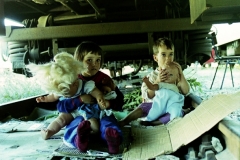
Martin Nangle is an award-winning photojournalist. His work for the national and international media began during the Northern Ireland conflict and continued on secondment to Associated Press London bureau to work in Berlin, Jerusalem, Damascus, Kuwait, Iraq, Cairo and later the Balkans. He documented the early years of post-Communism and the secessionist Wars in Yugoslavia and most recently photographed life in Myanmar.
Over the last 25 years he has been the subject of television documentaries about his experiences as a photojournalist in areas of civil and military unrest, and some of his work is in the permanent collection of the Ulster Museum.
A select number of images from several of his projects are now available as signed, numbered and embossed limited edition prints on archive quality paper.
Martin Nangle is chairman of APAC association (Associated Photojournalism for Art & Culture). http://martinnangle.com
Over the last 25 years he has been the subject of television documentaries about his experiences as a photojournalist in areas of civil and military unrest, and some of his work is in the permanent collection of the Ulster Museum.
A select number of images from several of his projects are now available as signed, numbered and embossed limited edition prints on archive quality paper.
Martin Nangle is chairman of APAC association (Associated Photojournalism for Art & Culture). http://martinnangle.com
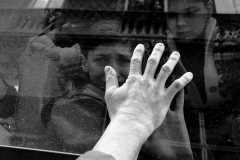
SURVIVAL IN SARAJEVO: JEWS, BOSNIA AND THE LESSONS OF THE PAST | In 1991 I moved to Berlin, where I began working on what was meant to be a second book, on Germans and Jews. But after I had invested two years in the project, something happened in 1993 that changed everything. I was having coffee with a friend, Tom Gjelten of National Public Radio. Tom had told me something he had just seen while covering the siege of Sarajevo: that the tiny Jewish community had turned itself into a humanitarian aid agency and it was staffed by Jews and Muslims, Serbian Orthodox and Catholic Croats. Hadn’t I been to Sarajevo before the siege and didn’t I know people in the Jewish community? I did indeed, but never, I told him, would I go into a war zone.
Two weeks later, I was riding in the back of an armored personnel carrier through the streets of Sarajevo and stepped out and walked with wobbly knees into the community center, which I had visited in 1988 and 1989. I met my old friends who were running its humanitarian aid agency, started making notes and pulled out a camera. They slid the slivovitz across the table.
I made four trips to Sarajevo between November 1993 and February 1994 and spent a total of forty-four days under fire (which was nothing compared to other journalists and that was nothing compared to the poor souls trapped there) and then I followed the story to Israel, where I photographed and wrote about Sarajevans trying to set up new lives for themselves.
I would return to Sarajevo twice more during the siege but by this point, I had enough pictures and stories to produce a book, which I did in late 1994. Survival in Sarajevo: Jews, Bosnia, and the Lessons of the Past was published by Brandstaetter and DAP (Distributed Art Publishers) and sold over 15,000 copies in English and 5,000 in German. The photographs from this project are the strongest and most compelling I ever made as I wanted to capture what it was like to live in a war zone. Photographs from this collection were purchased by the Touro Museum in New Orleans, the Baltimore Museum of Art, the Cincinnati Art Museum, the High Museum of Art in Atlanta and the (late) Corcoran Museum in Washington.
www.edwardserotta.org
Two weeks later, I was riding in the back of an armored personnel carrier through the streets of Sarajevo and stepped out and walked with wobbly knees into the community center, which I had visited in 1988 and 1989. I met my old friends who were running its humanitarian aid agency, started making notes and pulled out a camera. They slid the slivovitz across the table.
I made four trips to Sarajevo between November 1993 and February 1994 and spent a total of forty-four days under fire (which was nothing compared to other journalists and that was nothing compared to the poor souls trapped there) and then I followed the story to Israel, where I photographed and wrote about Sarajevans trying to set up new lives for themselves.
I would return to Sarajevo twice more during the siege but by this point, I had enough pictures and stories to produce a book, which I did in late 1994. Survival in Sarajevo: Jews, Bosnia, and the Lessons of the Past was published by Brandstaetter and DAP (Distributed Art Publishers) and sold over 15,000 copies in English and 5,000 in German. The photographs from this project are the strongest and most compelling I ever made as I wanted to capture what it was like to live in a war zone. Photographs from this collection were purchased by the Touro Museum in New Orleans, the Baltimore Museum of Art, the Cincinnati Art Museum, the High Museum of Art in Atlanta and the (late) Corcoran Museum in Washington.
www.edwardserotta.org
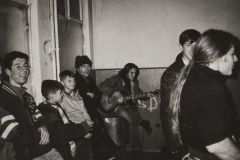
A producer’s story unlike any you've heard before. Alex Elena was raised in the back streets of Rome, Italy. His father, a drummer, and mother, an artist, often entertained and temporarily housed various musician friends from all around the world who would come to jam sessions and record at their home. These multi-cultural artist souls fast became the much older brothers and sisters to this only child, who first picked up a drumstick at age 3 and notoriously slept in the bass drum of his father’s drum kit. Like his father, Alex excelled at playing the drums and he ended up on stage for his very first gig at age 6, in front of a couple of thousand people. At age 17, he moved to London after landing a part in Bruce Dickinson’s (front man for Iron Maiden) solo project band. At age 23 he relocated to New York where he worked as a session musician playing on Avril Lavigne’s multi-platinum debut album "Let Go" as well as on records by Belinda Carlisle, Adam Holzman and Brave New World (ex Miles Davis) to mention a few. His most significant collaboration may have been with musician-producer Tarka Cordell, son of the legendary Denny Cordell, who handed his TriBeCa studio over to Elena during a lengthy stay in England. It was during this time that Elena began honing his production skills. Elena says of Tarka Cordell, “He was the first person who saw me as a producer. Once Alex got behind the console he just couldn't stop and he began to collect equipment and experiment with recording techniques, always in search of that perfect sound as well as fresh new talent to nurture and develop. He also wanted to stir things up stating, “When you have a great pop song to begin with, why would you want to simply follow the modern trends of production? I don't find that challenging. My job is to open up new doors and create the circumstances that allow my artists to fully express themselves”.
He later moved to Los Angele where he opened up his own studio in Culver City. He partnered up with Grammy Winning producer mixing and mastering engineer Steve Baughman and together they formed their own production company Two Beards Productions. Alex's studio, M-15 West is managed by Francesco Carrozzo who is also the house engineer and works alongside Alex and Steve. Alex is endorsed by Ehrlund Microphones. One night in December 1994, Bruce Dickinson, with the aid of United Nations soldiers, slipped into Sarajevo and played a concert with his solo band, Alex Dickson, Chris Dale and Alex Elena - Skunkworks.
The story of the band’s journey to a city cut off from the world, and the concert itself, was immortalized in the 2017 film "Scream For Me Sarajevo." These are the photos Alex took during that time he was in Sarajevo. http://www.alexelenaphotography.com
He later moved to Los Angele where he opened up his own studio in Culver City. He partnered up with Grammy Winning producer mixing and mastering engineer Steve Baughman and together they formed their own production company Two Beards Productions. Alex's studio, M-15 West is managed by Francesco Carrozzo who is also the house engineer and works alongside Alex and Steve. Alex is endorsed by Ehrlund Microphones. One night in December 1994, Bruce Dickinson, with the aid of United Nations soldiers, slipped into Sarajevo and played a concert with his solo band, Alex Dickson, Chris Dale and Alex Elena - Skunkworks.
The story of the band’s journey to a city cut off from the world, and the concert itself, was immortalized in the 2017 film "Scream For Me Sarajevo." These are the photos Alex took during that time he was in Sarajevo. http://www.alexelenaphotography.com
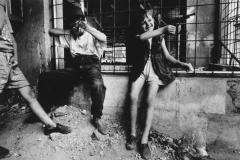
Roger Hutchings is a British Postwar & Contemporary artist who was born in 1952. He is an award-winning documentary photographer who studied at Newport School of Art in Wales mentored by the Magnum photographer David Hurn. Thereafter he worked with the London Observer Newspaper as a roving photojournalist covering British and World affairs. Subsequently he joined the photographic agency Network Photographers undertaking assignments for many of the World's leading news magazines. Between commissions he concentrated on personal documentary work producing books and exhibitions for an international audience. Three significant pieces of reportage have received critical acclaim. Thatcher's Britain, a long-term social documentary report about Britain; Bosnia, surviving the civil war in Former-Yugoslavia and Ataturk's Children, pictures examining the relationship between the Turkish State and its Kurdish minority.
For more you can read here: www.rogerhutchings.com
For more you can read here: www.rogerhutchings.com
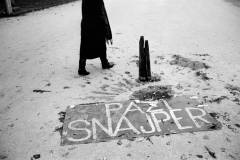
Dario Mitidieri is Italian photojournalist, living in London. Recipient of the W. Eugene Smith Award in Humanistic Photography, the Visa d'Or at the International Festival of Photojournalism in Perpignan, the Getty Images Grant in Editorial Photography and the European Publishers Award for Photography. Also a twice winner in the World Press Photo contest. He is collaborating with ad agencies, design groups & NGOs. Author of Children of Bombay & past British Press Photographer of the Year. www.mitidieri.com
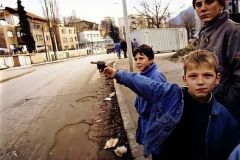
Christopher Morris was born in California in 1958 and began his career as a documentary conflict photographer working almost exclusively for TIME Magazine, where he has been on contract since 1990. He has been credited with redefining political coverage in America during his years working at the White House for TIME Magazine from 2000 till 2009.
Simultaneously to his career as a photojournalist, Morris has expanded his work into the fashion world. He has received various awards, including the Robert Capa Gold Medal, the Olivier Rebbot Award, the Journalism Award from the Overseas Press Club, two Infinity Awards for photojournalism from the International Center of Photography in New York, the PDN Look Fashion Editorial Award and numerous World Press Photo awards. Morris is a founding member of VII Agency based in New York.
Simultaneously to his career as a photojournalist, Morris has expanded his work into the fashion world. He has received various awards, including the Robert Capa Gold Medal, the Olivier Rebbot Award, the Journalism Award from the Overseas Press Club, two Infinity Awards for photojournalism from the International Center of Photography in New York, the PDN Look Fashion Editorial Award and numerous World Press Photo awards. Morris is a founding member of VII Agency based in New York.
Ne smijete distribuirati ili reproducirati bilo koji sadržaj u bilo kojem obliku bez prethodnog pismenog odobrenja. Korištenjem ove stranice prihvaćate da se obvezujete uvjetima međunarodnih zakona o autorskim pravima.
